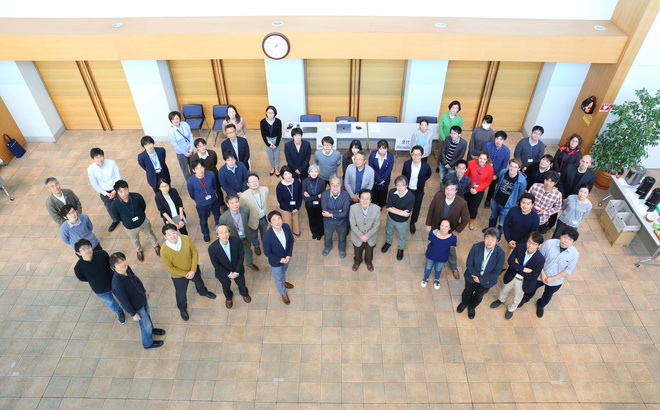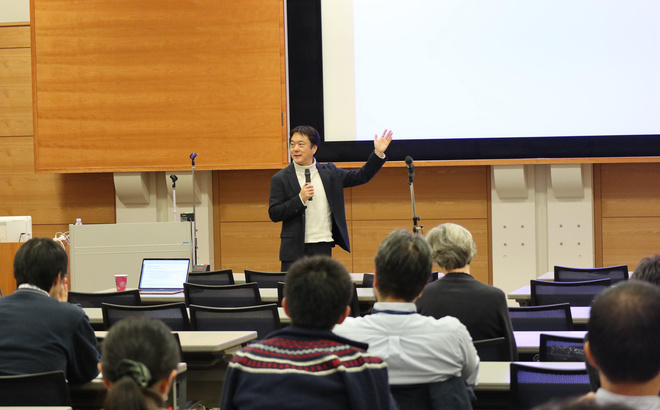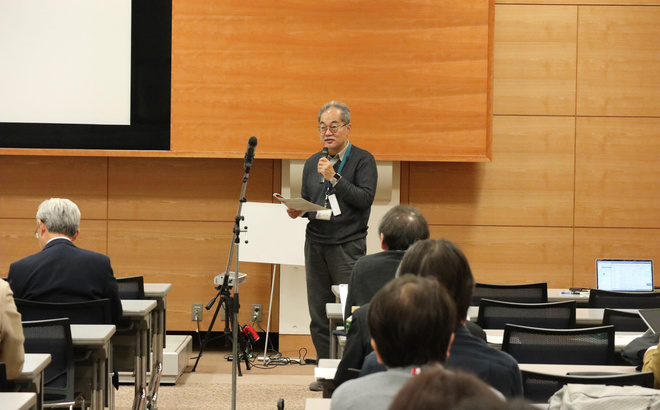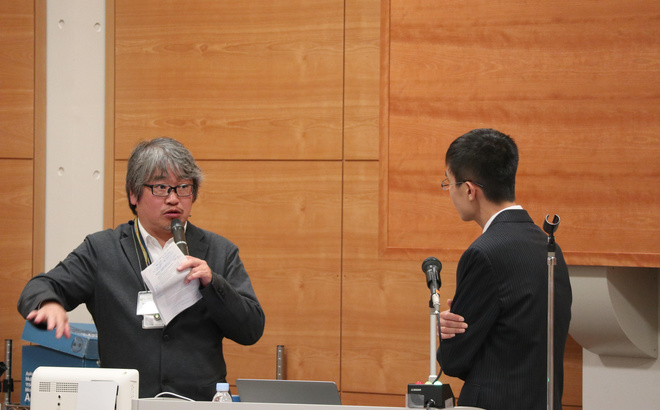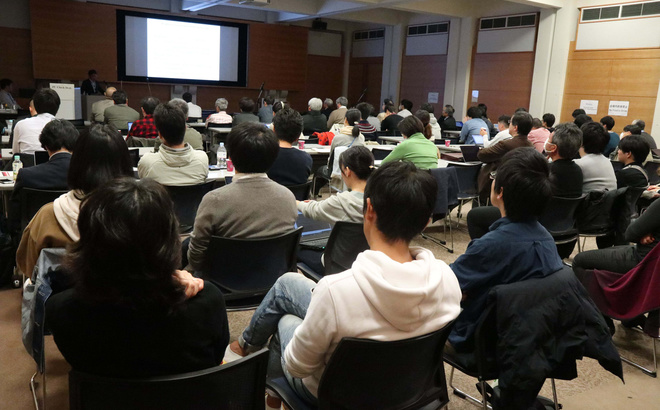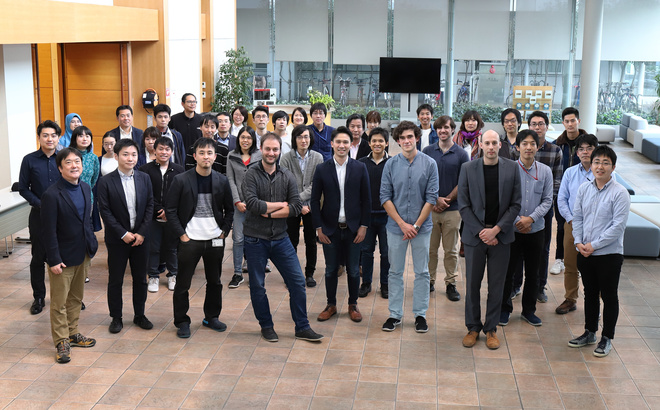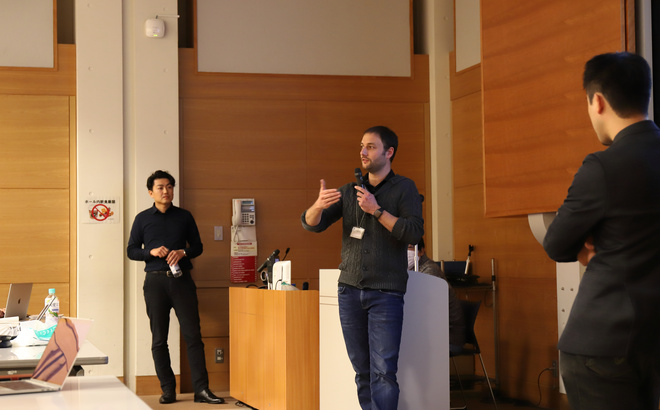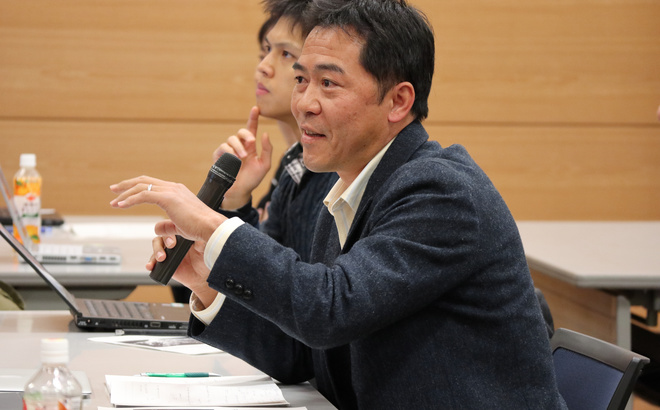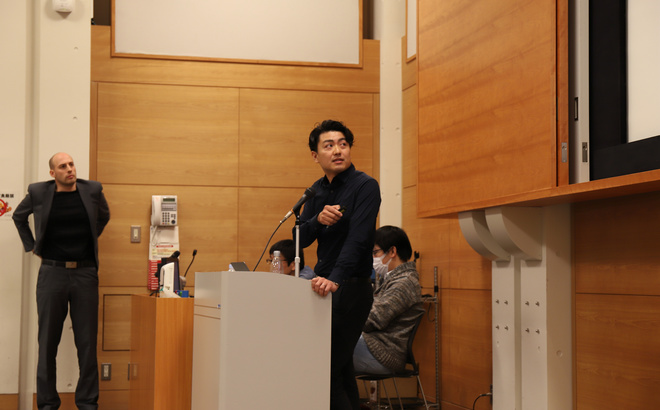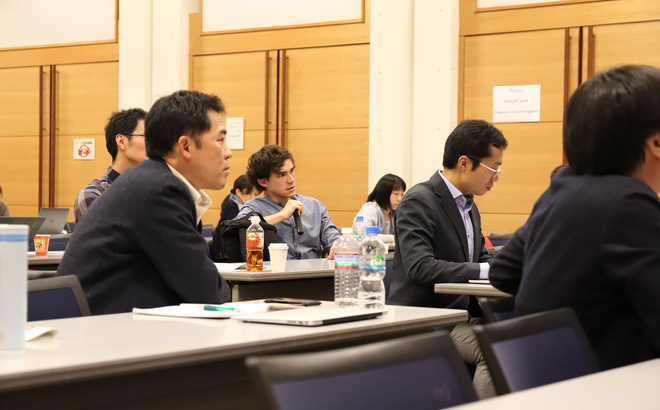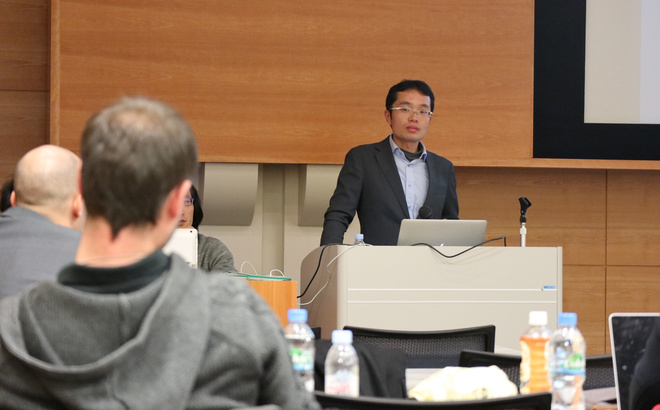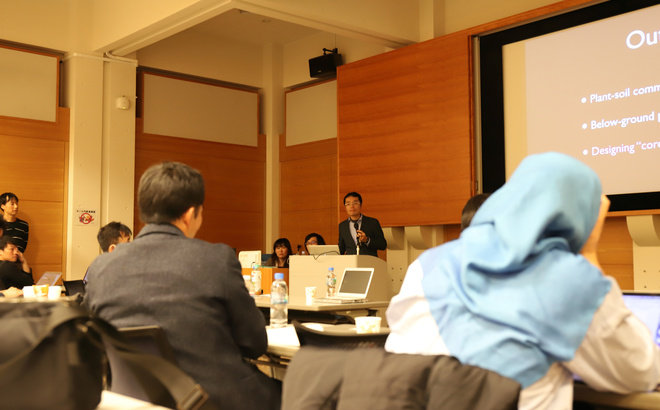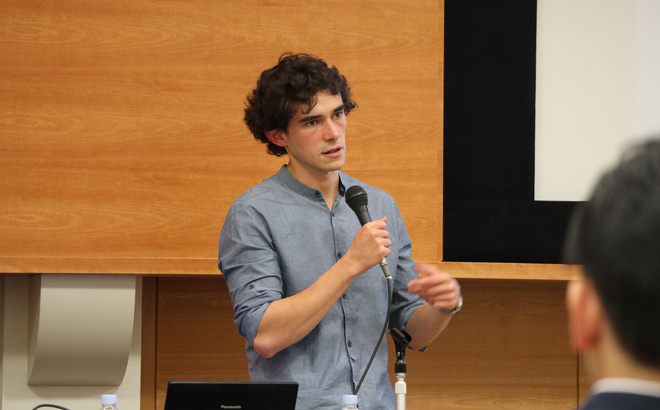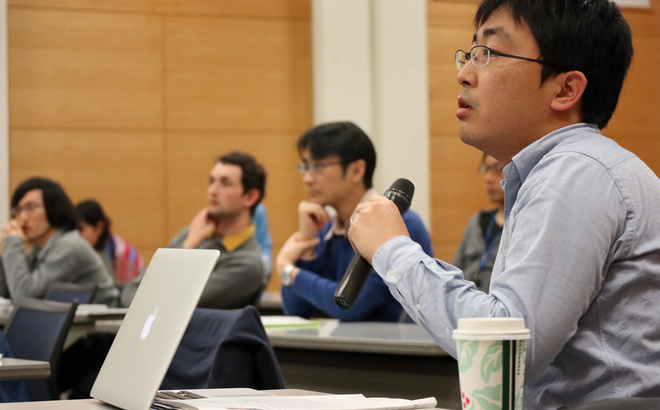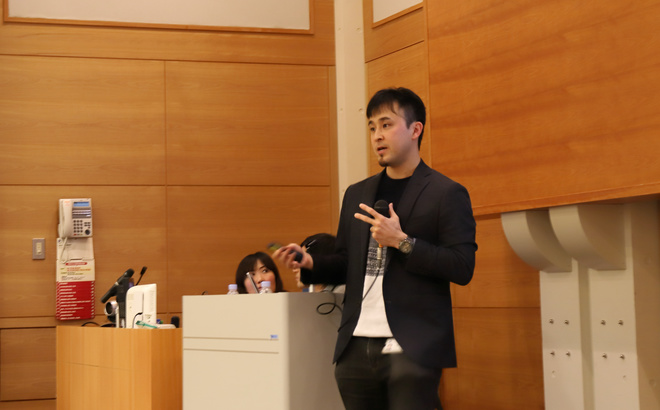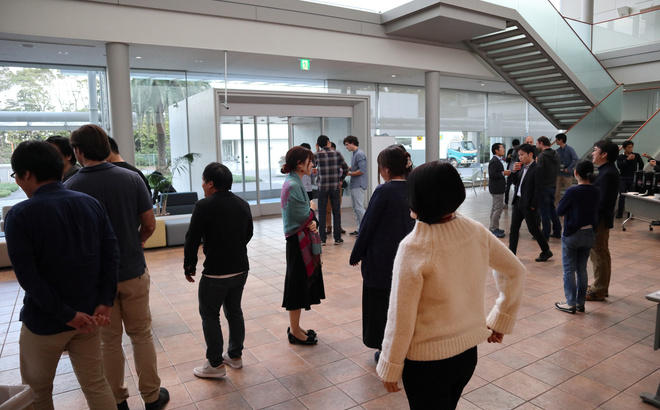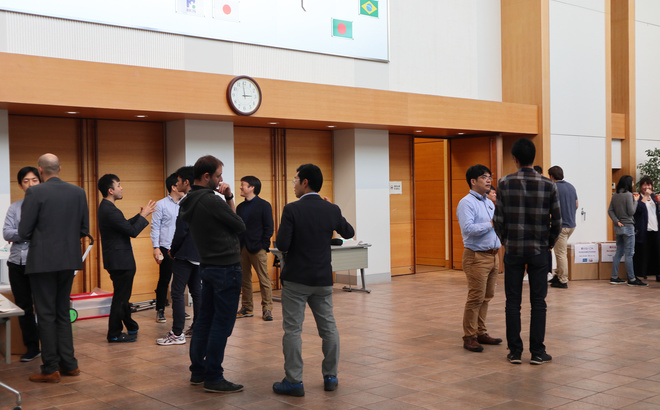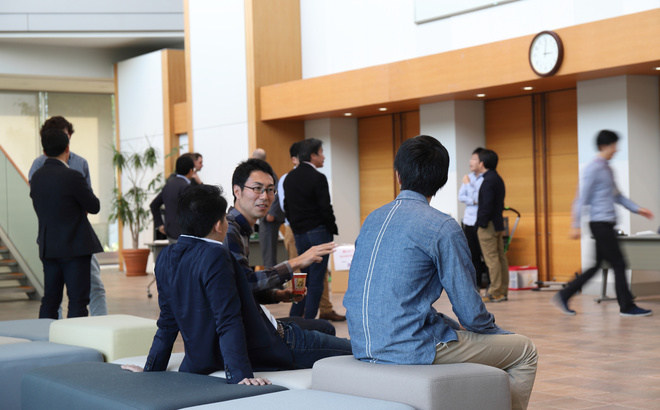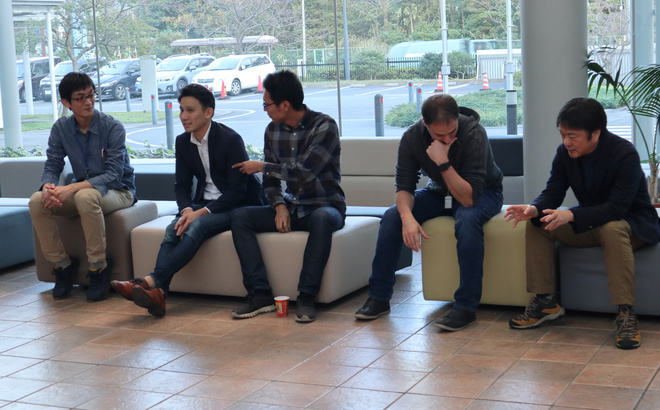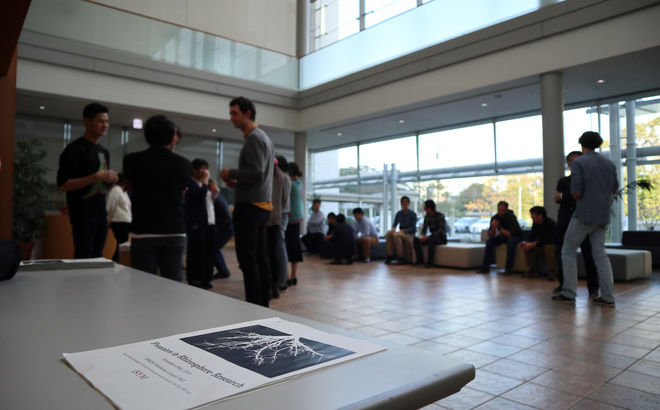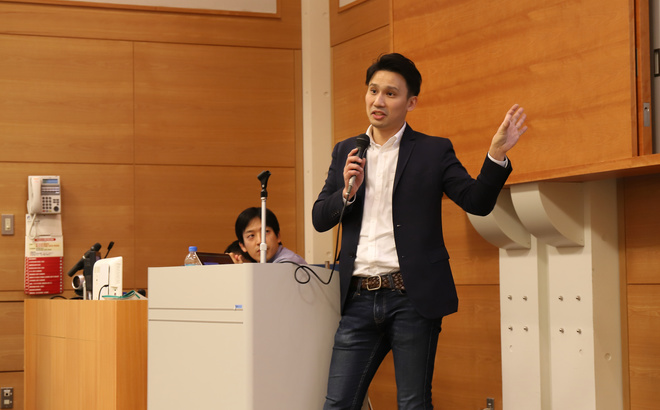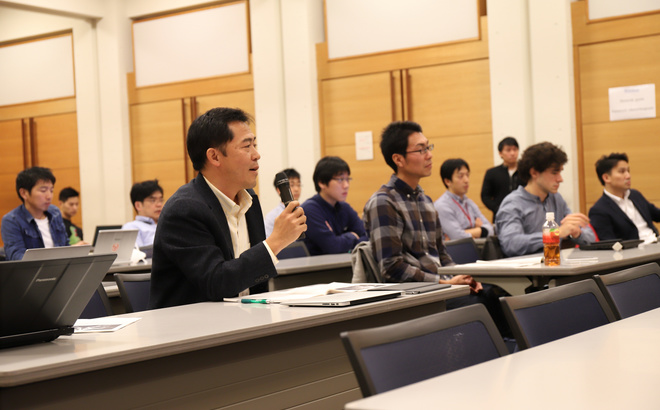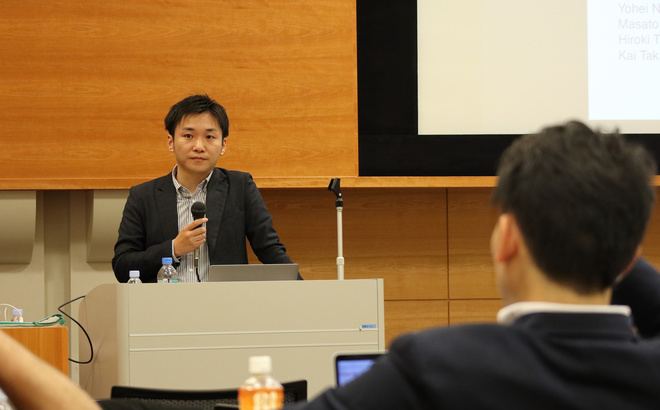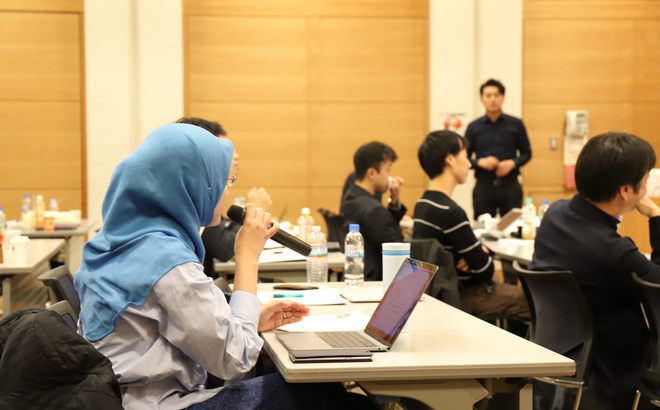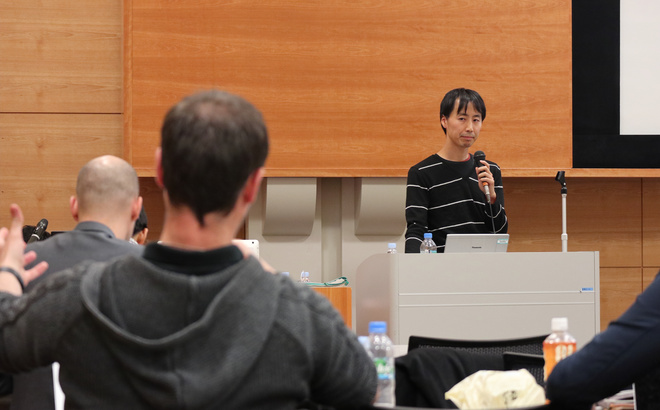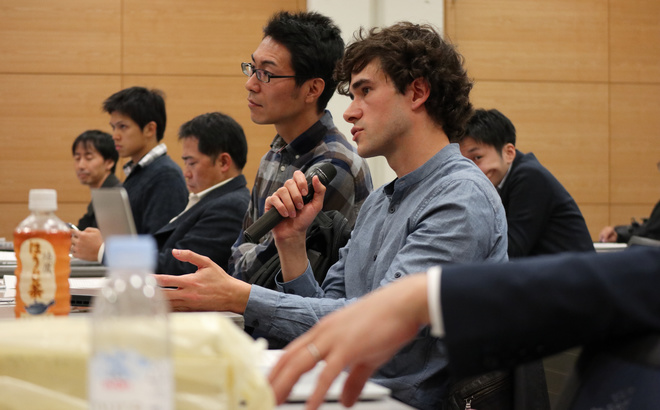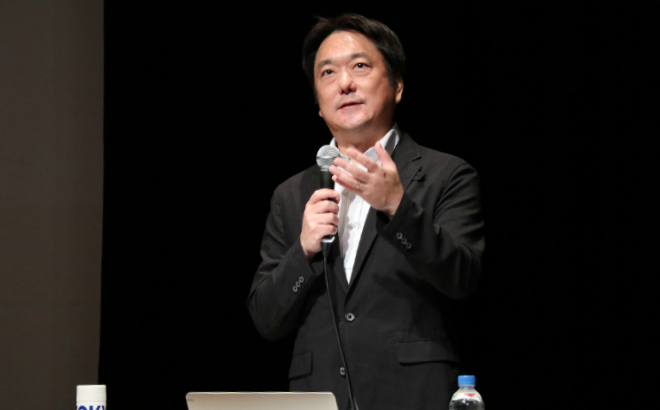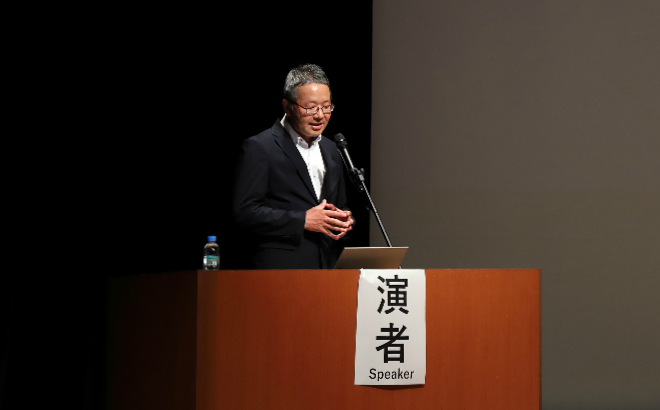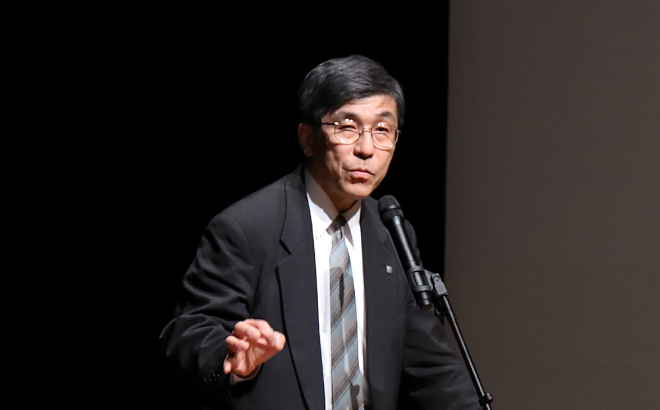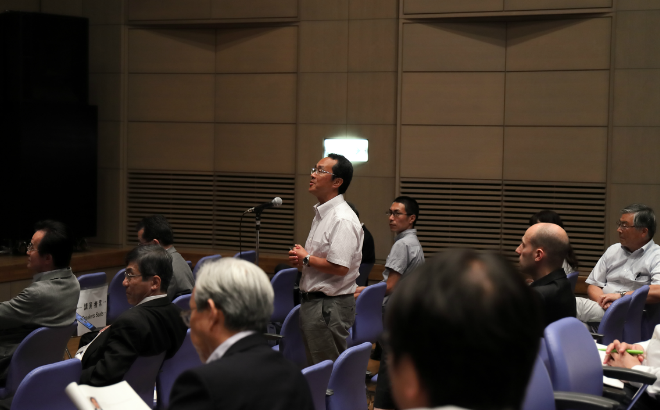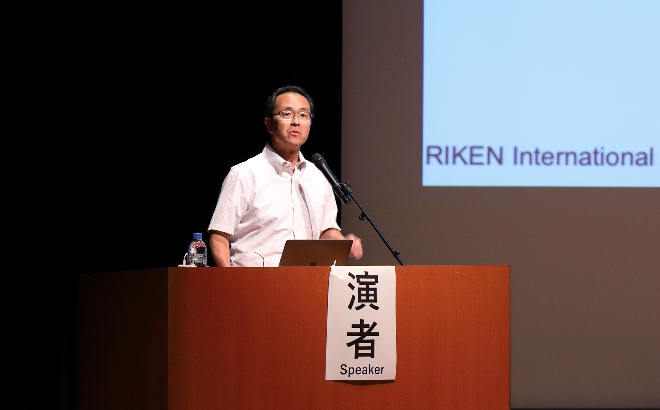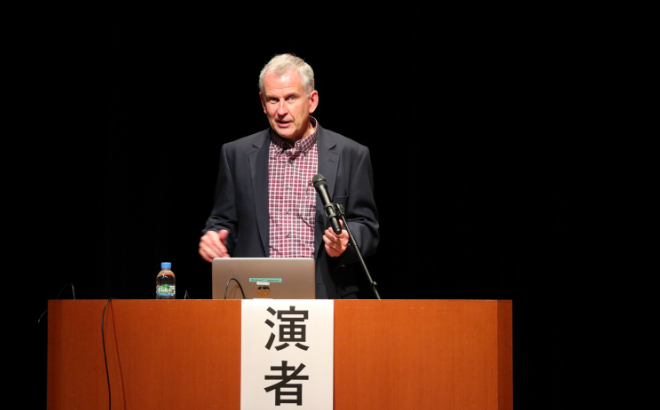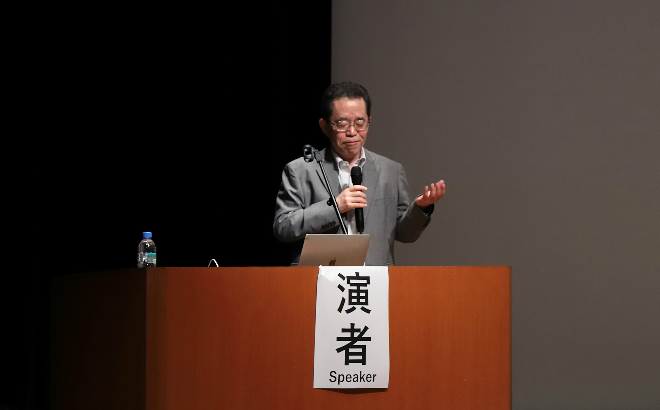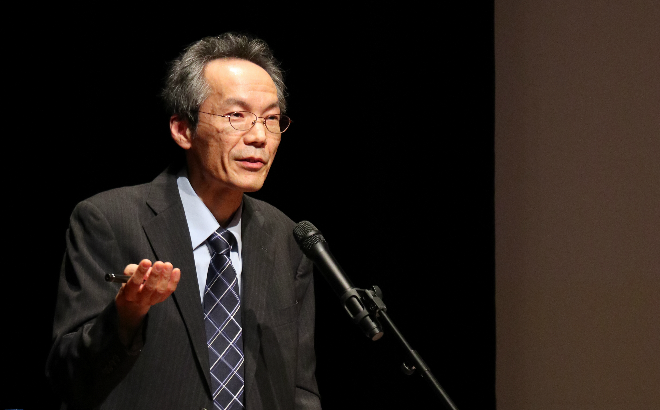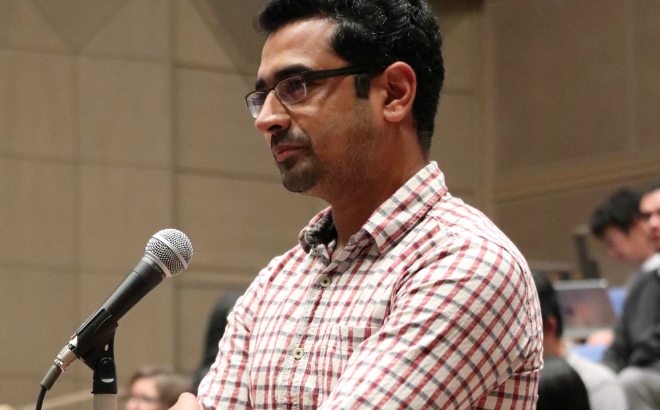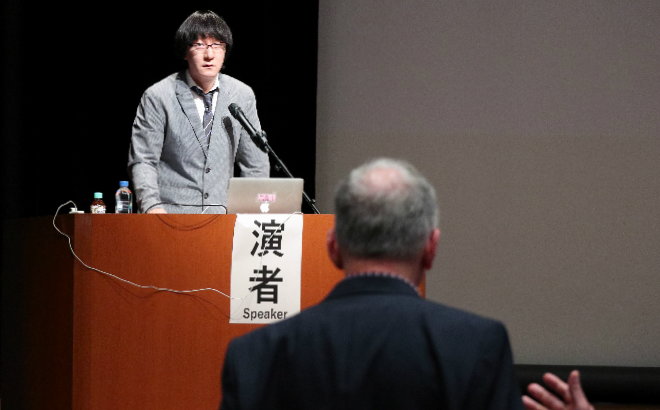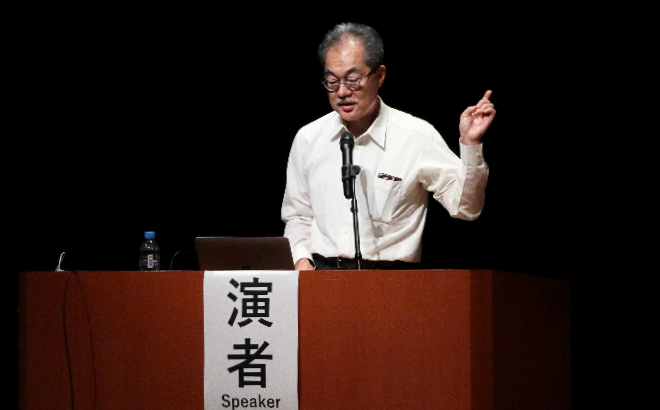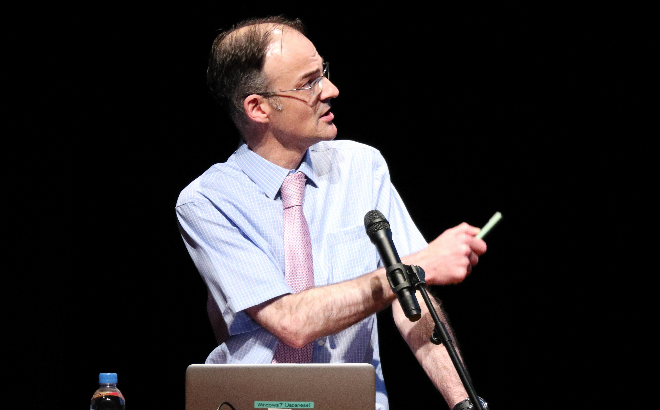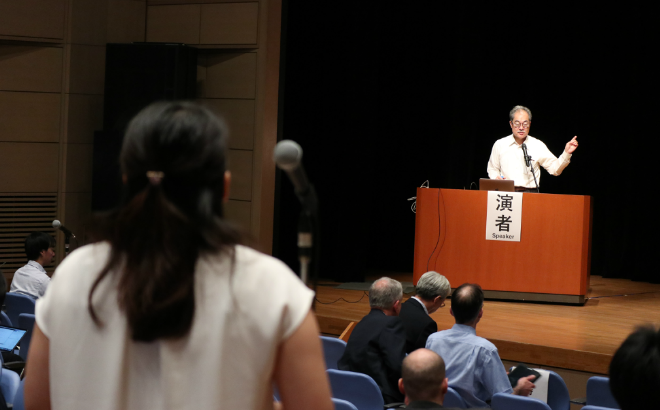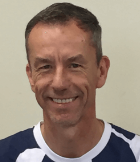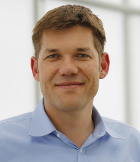Seminars & Workshops
Symbiology Workshop 2019 & RIKEN-JSS Joint Symposium
Dates: November 18-19
Venue: RIKEN Yokohama Campus, Koryuto Hall
Program: RIKEN-JSS Joint Symposium
Hosts: iSYM, Biology of Symbiosis and Japan Symbiology Society
iSYM Seminar @RIKEN Yokohama
Date: December 19th, 2019
Time: 15:00-16:00
Venue: C210/212, Central Research Building, RIKEN Yokohama Campus
Language: English
Speaker: Dr. Gabriel Castrillo, Research Fellow, Future Food Beacon of Excellence and the School of Biosciences, University of Nottingham, Sutton-Bonington, United Kingdom
Title: Characterisation of the regulatory interplay between the plant microbiome and root endodermal cell wall diffusion barriers
Abstract:
Plant-associated bacteria are crucial in host adaptation to diverse environmental stresses. Beneficial microbes increase nutrient uptake and accumulation in the host, improving plant growth and health. It is unknown how the plant microbiota and the ions diffusion barrier at the root endodermis coordinate to control the flow of nutrients between the soil and xylem. Here we found that the genes regulating the root diffusion barriers alter the composition of the plant microbiota. We characterise bacterial effect on the root barriers deposition and how it changes the ion homeostasis of the plant. We also found that the plant microbiota stabilises the permeability of the root in response to nutritional stress conditions. Our work will provide a better understanding of the role of bacteria in root function, and will provide vital information for the development of effective field bio-inocula to promote useful agronomic gains.
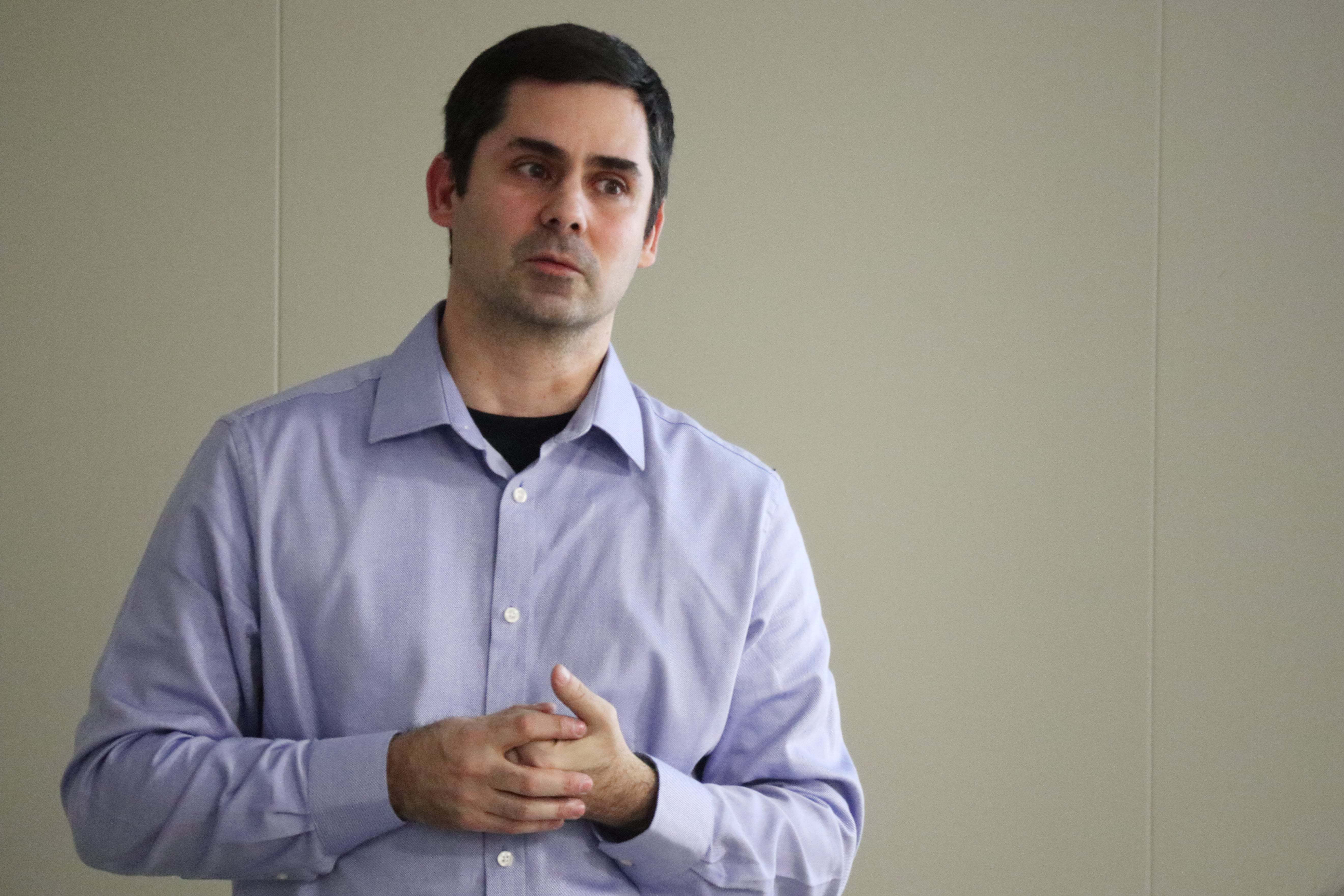
iSYM Seminar @RIKEN Yokohama
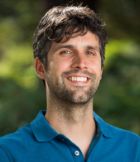
Time: 14:00-15:00
Venue: E717/719, East Research Building, RIKEN Yokohama Campus
Language: English
Speaker: Dr. David Nelson, Associate Professor of Genetics, Botany and Plant Sciences, University of California, Riverside
Title: The origins of karrikin and strigolactone signaling in plants
Abstract:
Karrikins (KARs) are a class of plant growth regulators found in smoke that trigger germination of many species that emerge after fire. KARs also influence the growth and stress responses of plants that are not from fire-prone environments. The KAR response pathway that has been characterized over the past decade has led to two quite unexpected conclusions. First, the mechanism by which plants respond to KARs is highly similar to the mechanism for responses to strigolactones (SLs), a class of plant hormones that control shoot branching, secondary growth, and senescence. The similarity of these pathways reflects their shared evolutionary origins; SL signaling components appear to have been derived from KAR pathway genes. Second, there is compelling evidence that KARs are naturally occurring analogs of an unknown endogenous signal, "KAI2 ligand" (KL) and that KL perception is the original function of the KAR pathway. Based on analysis of KAR signaling pathway mutants in Arabidopsis thaliana and rice, KL has been implicated in seed dormancy, seedling photomorphogenesis, drought tolerance, root and root hair development, and the capacity to form symbiotic interactions with arbuscular mycorrhizal fungi. Here we discuss our current strategies to identify KL and the characterization of KUF1 , a gene that imposes negative feedback regulation of KL biosynthesis and KAR metabolism. We anticipate that discovering KL and how it is made will provide new avenues for crop improvement and give insights into how KAR and SL signaling evolved.

iSYM Seminar @RIKEN Yokohama
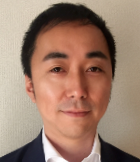
Time: 14:00-15:00
Venue: E717/719, East Research Building, RIKEN Yokohama Campus
Language: English
Speaker: Dr. Norio Takeshita, Microbiology Research Center for Sustainability, Faculty of Life and Environmental Sciences, University of Tsukuba
Title: Fungal-bacterial mutualistic interaction; fungal highway and bacterial toll
Abstract:
Physical spaces and nutrients are prerequisites to the survival of organisms while no interspecies mutual strategy is documented that satisfies them. Microbes ubiquitously live in nearly every ecological niche. Different species coexist in certain habitats and share available metabolites. Natural auxotrophic strains grow in the presence of external nutrients such as amino acids and vitamins which are provided by members of the local microbiota. A novel mutualistic growth mechanism is discovered between models of filamentous fungus and bacteria . The bacterial cells move faster along fungal highway and disperse farther on fugal growth, while bacterial cells deliver thiamine to tips of fungal hyphae and promote the fungal growth. The simultaneous spatial and metabolic interactions indicate a mutualism that facilitates the bacterial-fungal species to compete for environmental niche and nutrient respectively.
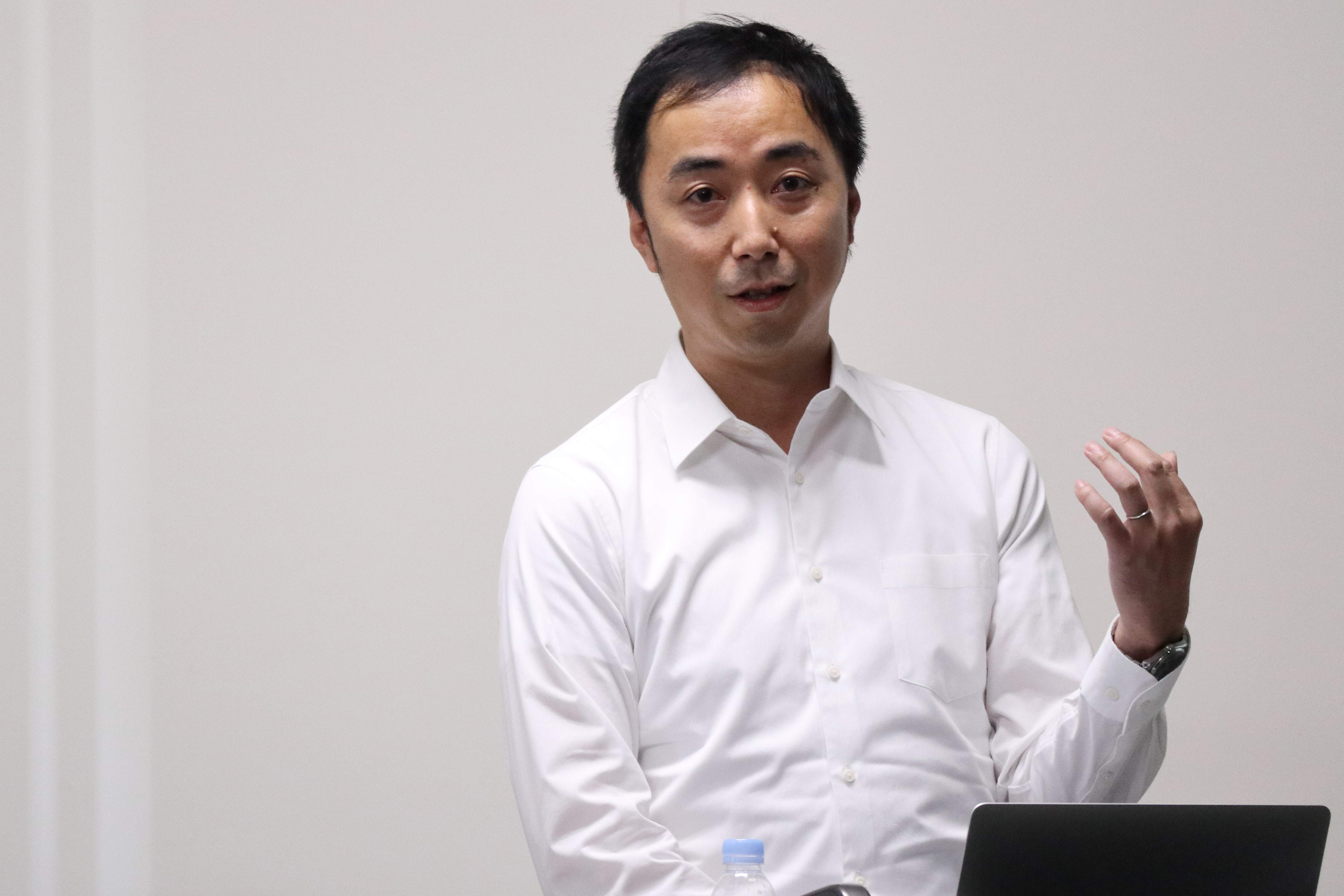
iSYM Internal Seminar Series @RIKEN Yokohama
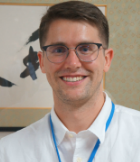
Time: 15:00-16:00
Venue: E717/719, East Research Building, RIKEN Yokohama Campus
Language: English
Speaker: Dr. Nicholas F. Parrish, Genome Immunobiology RIKEN Hakubi Research Team, RIKEN IMS
Title: Integrated SymVirology : symbiotic integration of two non-retro-transcribing viruses into human
Abstract:
A large percentage of the human genome is composed of endogenous retroviruses (10%) and retrotransposons (40%), elements that must integrate into the host genome in order to replicate. Moreover, viruses that do not integrate into the host genome during the course of their infectious lifecycle can also be found integrated into the human genome. This seminar will present two examples: 1) An RNA-only virus, Borna disease virus. Sequences from this virus were integrated into interfering small RNA-producing loci millions of years ago, likely by the enzymatic activity of retrotransposons. We hypothesize that the interfering small RNAs transcribed from these sequences induces tolerance to Borna disease virus infection. 2) An integrase-lacking DNA virus, Human Herpesvirus 6 (HHV-6). We have found evidence of ancient founder integrations of this virus, in a full-length form, into the telomere of certain chromosomes. We hypothesize that viral integration lengthens the functional telomere unit, preventing loss of host genes and itself upon telomere crisis. These examples highlight the remarkable capacity of the human genome to "self-edit" to evolve symbiosis with viruses.

iSYM Seminar @RIKEN Yokohama
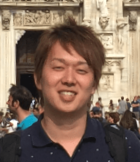
Time: 16:00-17:00
Venue: E717/719, East Research Building, RIKEN Yokohama Campus
Language: English
Speaker: Hiroaki Adachi, Sophien Kamoun Group, The Sainsbury Laboratory
Title: An NLR protein negatively regulates a plant immune receptor network
Abstract:
Plant and animal nucleotide-binding domain and leucine-rich repeat-containing (NLR) proteins function as intracellular immune receptors to detect pathogen molecules. The emerging paradigm is that plant NLR proteins form immune receptor networks composed of functionally specialized “sensor NLR” and “helper NLR” that recognize pathogen effectors and cooperate to induce immune responses, respectively. We previously revealed that NRC2, NRC3 and NRC4 function as helper NLRs, in a redundant manner, for a large number of sensor NLRs, forming an intricate NLR network termed the NRC network. The NRC network emerged over 100 million years ago in Solanaceae and related plant species and confers resistance to oomycetes, bacteria, viruses, nematodes and insects. However, regulatory mechanisms of the NRC network remains largely unknown. Here, I report that an NLR in the NRC family, termed NRCn, negatively regulates the NRC network. Gene silencing of NRCn in Nicotiana benthamiana resulted in an autoimmune-like dwarf phenotype that can be suppressed by co-silencing of NRC2 and NRC3. RNA interference of NRCn enhanced NRC2/NRC3-dependent cell death. Unlike other NRCs, typical autoactive mutations did not confer cell death inducing activity to NRCn, indicating that NRCn may have lost its capacity to trigger immune response. We propose that NRCn evolved as a “modulator NLR” that negatively regulates the NRC network for maintaining network homeostasis.
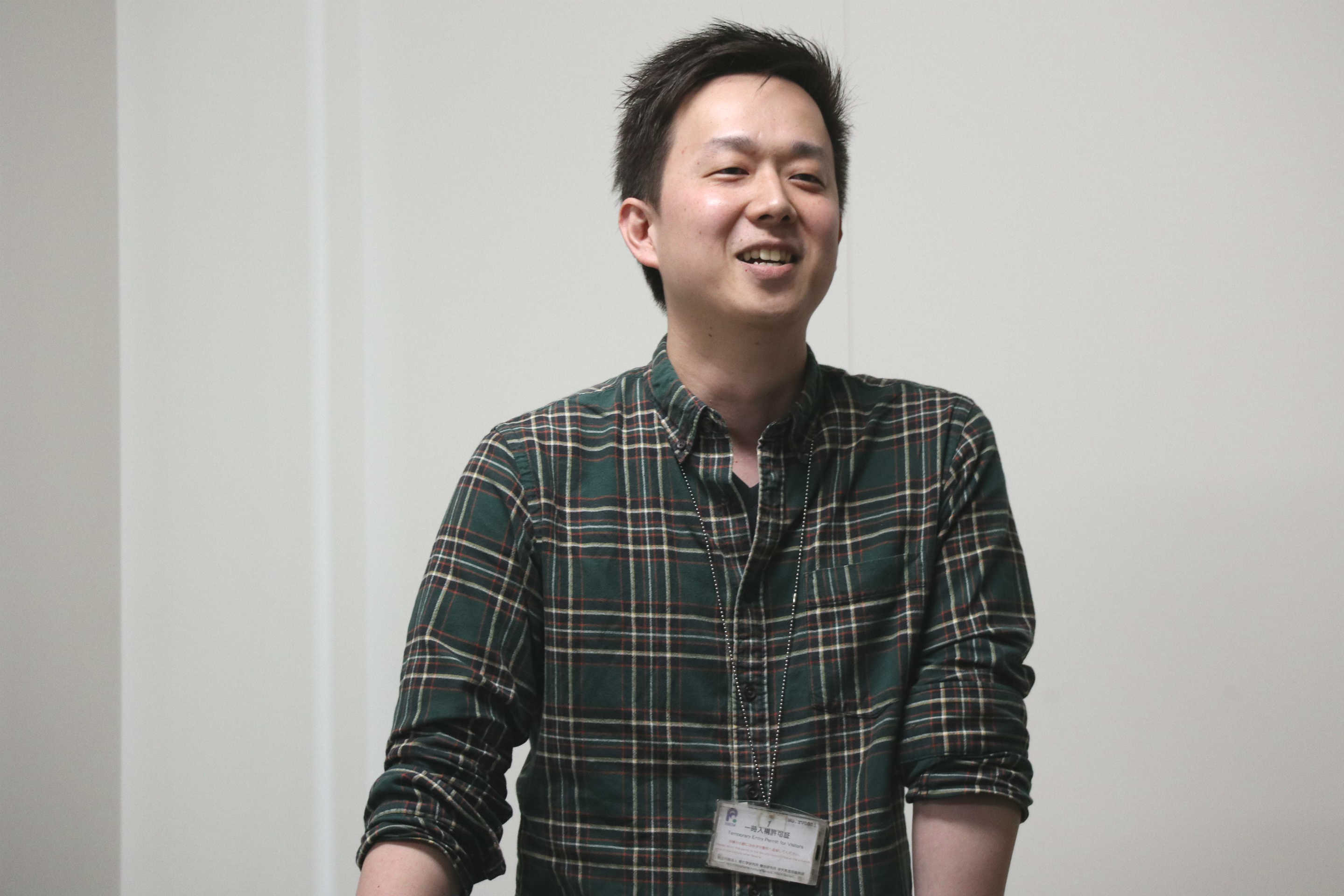
iSYM Internal Seminar Series @RIKEN Yokohama
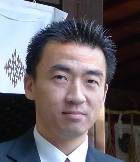
Time: 14:00-15:00
Venue: Discussion room, 3rd floor, North Research Building, RIKEN Yokohama Campus
Language: English
Speaker: Dr. Chikara Furusawa, Laboratory for Multiscale Biosystem Dynamics, RIKEN BDR
Title: Decoding gut microbiota by imaging analysis of fecal samples
Abstract:
The gut microbiota plays a crucial role in maintaining health, and thus monitoring the complex microbial population dynamics in gut is important. Here, we present a deep convolutional neural network that can characterize the dynamic changes in gut microbiota using low-resolution images of fecal samples. We also demonstrated that population ratio quantified by metagenome analysis can be quantitatively predicted by the neural network. Our approach provides a simple and inexpensive analysis of gut microbiota, applicable to diagnosis and health care purposes.
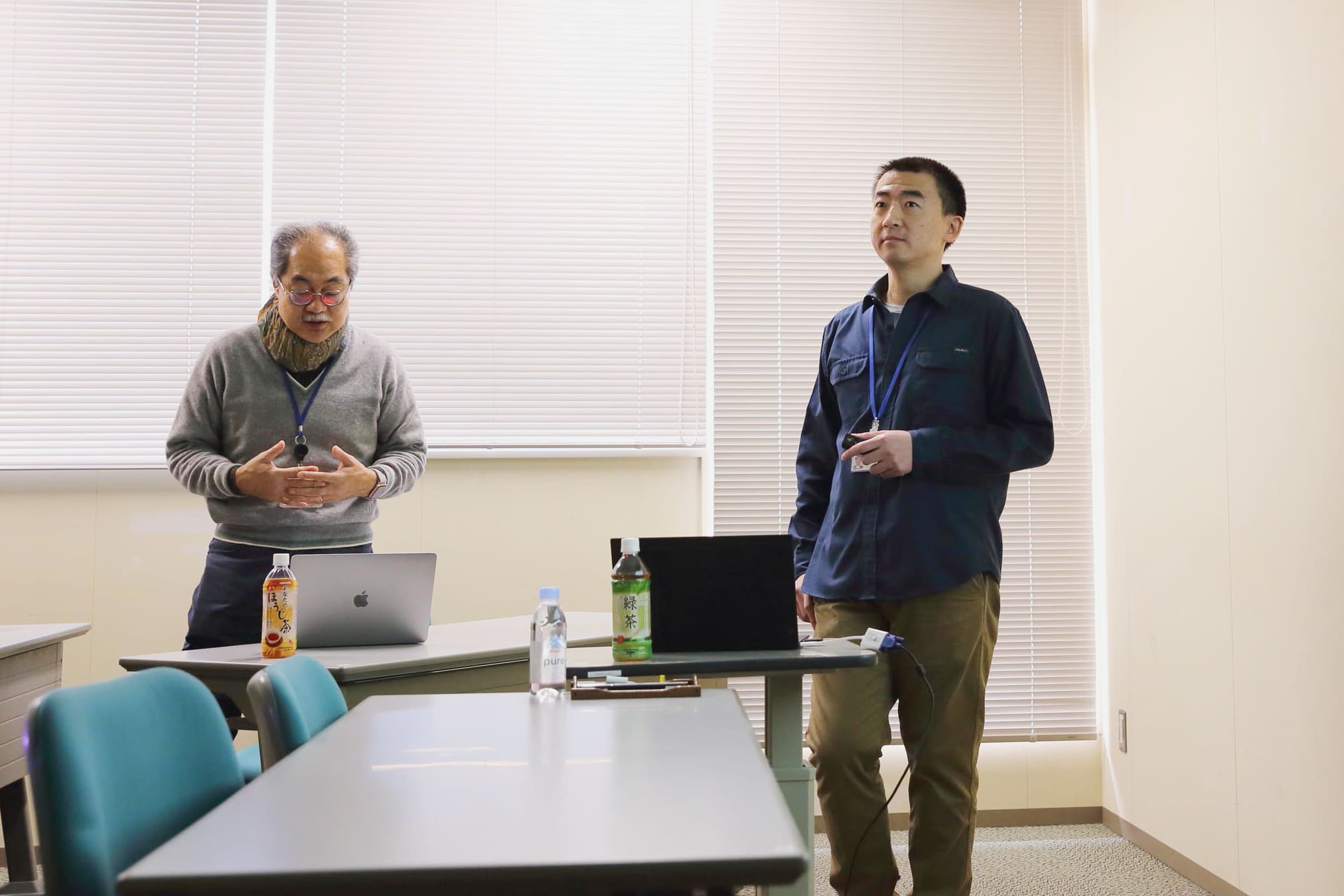
iSYM Innovation Seminar @RIKEN Yokohama
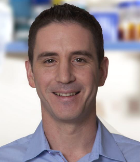
Time: 14:00-15:00
Venue: E717/719, East Research Building, RIKEN Yokohama Campus
Language: English
Speaker: Dr. Tuval Ben-Yehezkel, CEO at Loop Genomics, USA
Title: Loop Genomics LoopSeqTM single-molecule long-read sequencing
Abstract:
The advent of next generation sequencing (NGS) technology has revolutionized our ability to read the genetic code, bringing about tremendous progress in our understanding of how biology is encoded in DNA and in medical diagnostics. However, while the throughput of NGS has improved by orders of magnitude compared to Sanger sequencing, NGS is limited to reading DNA in short segments of 150-300 nucleotides at a time. Biology, unfortunately, is not encoded in stretches of 150 nucleotides, but in much longer segments of DNA and RNA spanning many thousands of nucleotides.
Loop Genomics has developed a synthetic long read sequencing technology that leverages existing Illumina short read sequencers coupled with LoopSeqTM barcoding technology to enable single-molecule, long-read sequencing on any Illumina infrastructure.
In this talk we will explore LoopSeqTM sequencing technology and how it is applied to provide additional, previously inaccessible layers of information from Illumina sequencer for a wide variety of sequencing applications as diverse as Microbiome, Transcriptome, Targeted Amplicons and others.
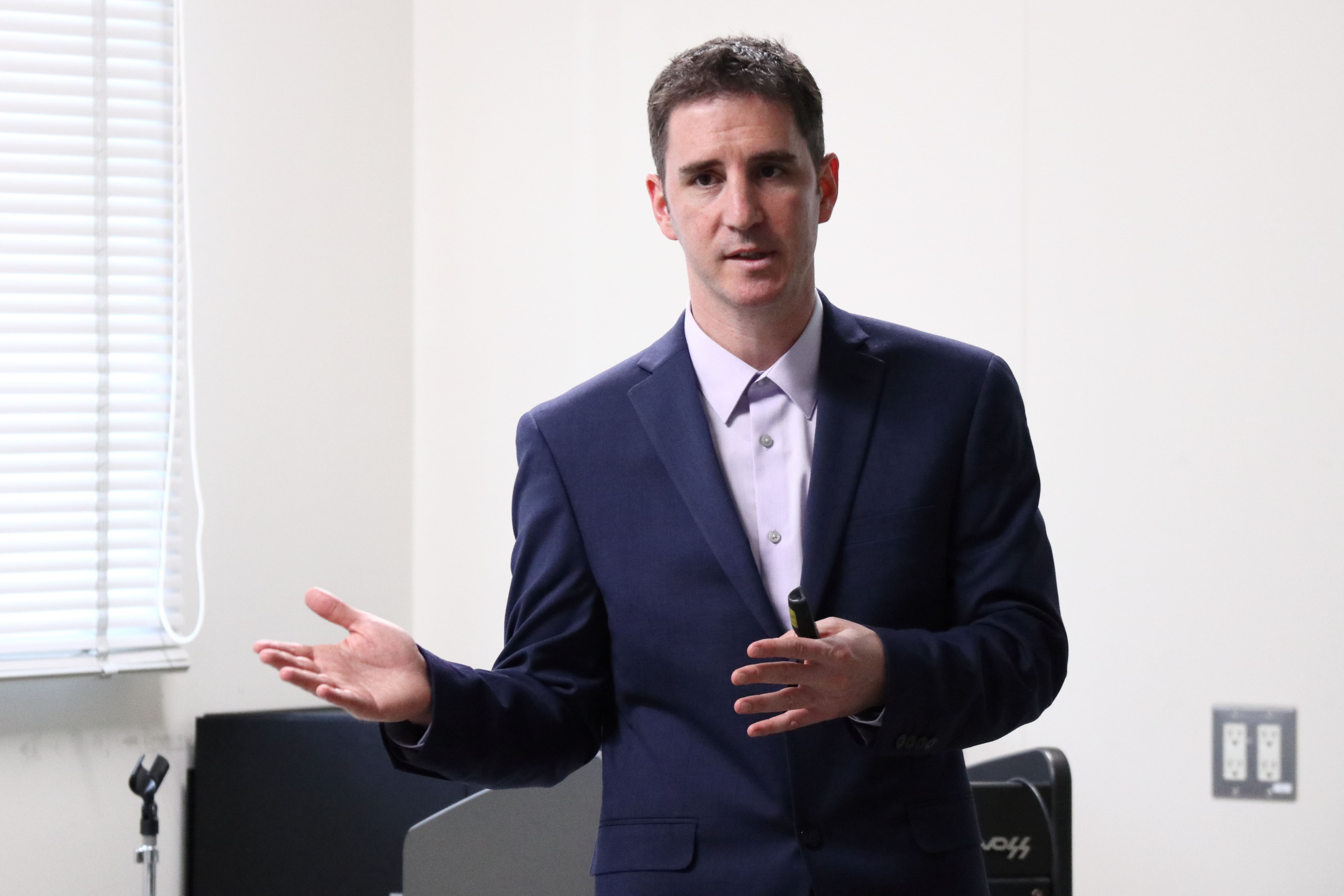
iSYM Internal Seminar Series @RIKEN Yokohama
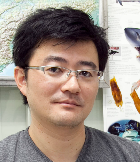
Time: 10:30-11:30
Venue: E717/719, East Research Building, RIKEN Yokohama Campus
Language: English
Speaker: Dr. Shigehiro Kuraku, Laboratory for Phyloinformatics, RIKEN BDR in Kobe
Title: Challenges in genomic studies of non-laboratory species: lessons from sharks
Abstract:
Advancement of DNA sequencing technologies has enhanced the potential of in-depth genome analysis on diverse species through de novo sequencing. However, the success of such projects targeting non-laboratory species largely depends on other strategic factors, including deliberate sampling, preparation of unbiased libraries, appropriate sequencing design and assembly, and researchers’ biological sense for data interpretation. Each of these factors requires decision-making, which cannot usually be evidenced by own prior experience, due to resource-demanding nature of sequencing and computation. This seminar will cover speaker’s recent experience in shark genome analysis (Hara et al., 2018. Nat. Ecol. Evol. 2: 1761-1771), with a special emphasis on technical and strategic aspects of de novo genome sequencing projects. Application of the prevailing method for chromosome-scale genome scaffolding based on Hi-C will also be discussed herein.
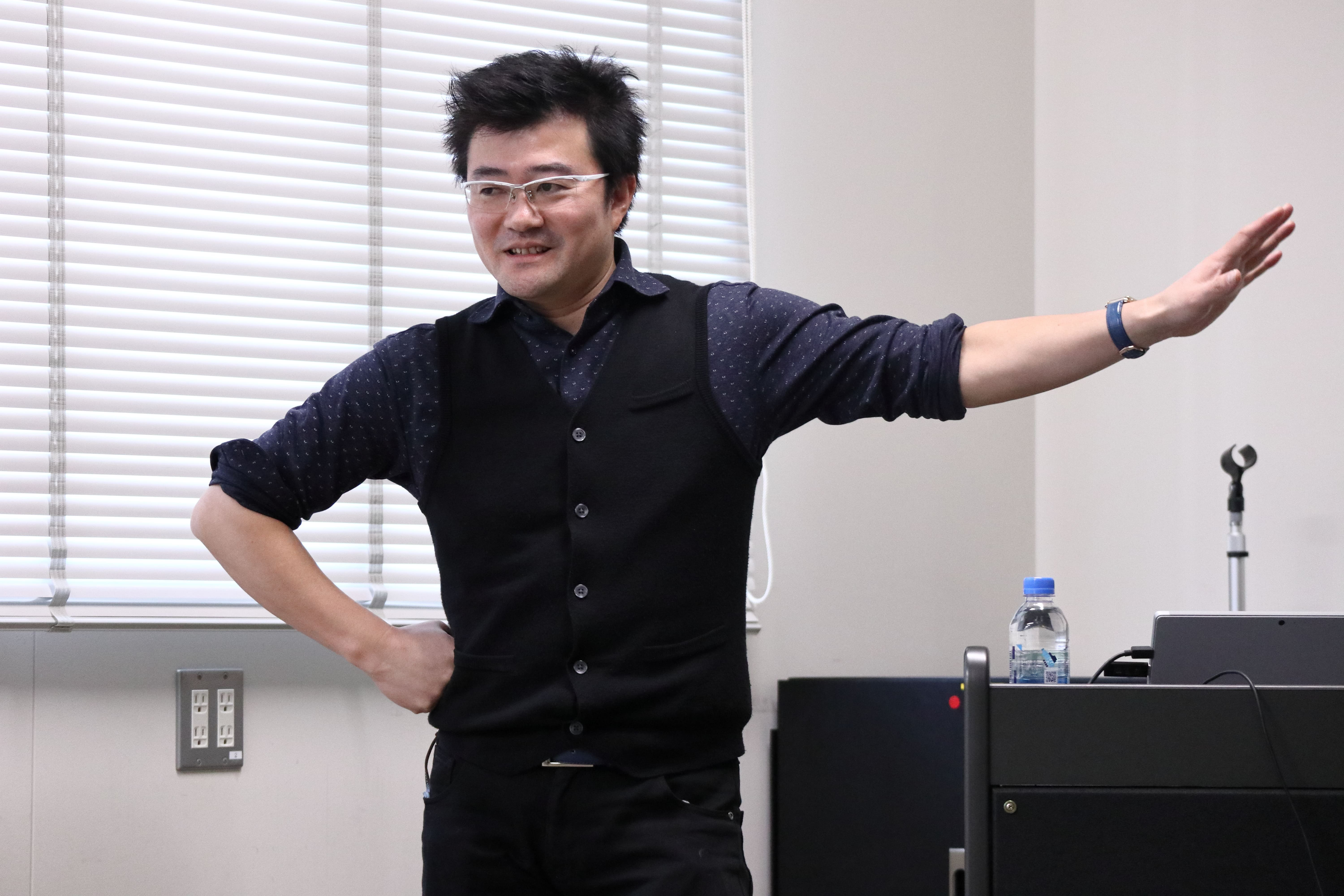
iSYM Seminars @RIKEN Yokohama
Date: December 13th, 2018
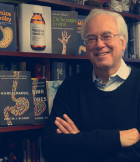
Time: 13:00-14:00, 14:00-15:00
Venue: Main Lecture Hall, RIKEN Yokohama Campus
Language: English
Speaker1:
13:00-14:00
Dr. Martin J. Blaser, New York University Langone Medical Center, USA
Title: The role of the early life microbiome in host metabolic and immunologic development
Abstract:
A central feature of mammalian development across an evolutionary timeframe is the high fidelity intergenerational transfer of resident microbes. Yet the microbiome of young animals, crucial in the early life window of development, has limited resilience, and is vulnerable to perturbation. We have shown that early life antibiotic exposures can alter microbiota development with both metabolic and immunological consequences. We have extended these studies to both include the prior generation, and to more fully examine both antibiotic and dietary effects. Network models best explain microbiota dynamics, with linkages to phenotypes. In total, our work highlights the importance of early events in shaping the microbiome of developing animals, with effects that may extend to successive generations.
Speaker2:
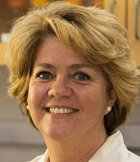
Dr. Maria Gloria Dominguez-Bello, Principle Investigator, Rutgers University, USA
Abstract:
The microbiota is transmitted vertically, within species and throughout generations.In mammals, exposure to live microbes occurs at the time of labor. Different body sites of the baby reshape the primordial source of maternal vaginal/perineal microbiota, and these microbes play a role in healthy development of each organ. Bypassing the birth canal at birth (such as in C-section), and early exposure to antibiotics, have been associated with increased incidence of immune and metabolic disorders (asthma, T1D, allergies, obesity). Urban lifestyle is rich in antimicrobial practices, and has been associated with decrease in the human microbiota diversity. If the degraded the human microbiota, result of modern practices (some of them needed, such as medical interventions), is a factor fostering modern diseases, we will need restoration approaches to arrest and prevent the current trend in urban diseases. More research is needed to determine lost microbes and their functions and evolutionary history, to be used in the restorative medicine of the future.
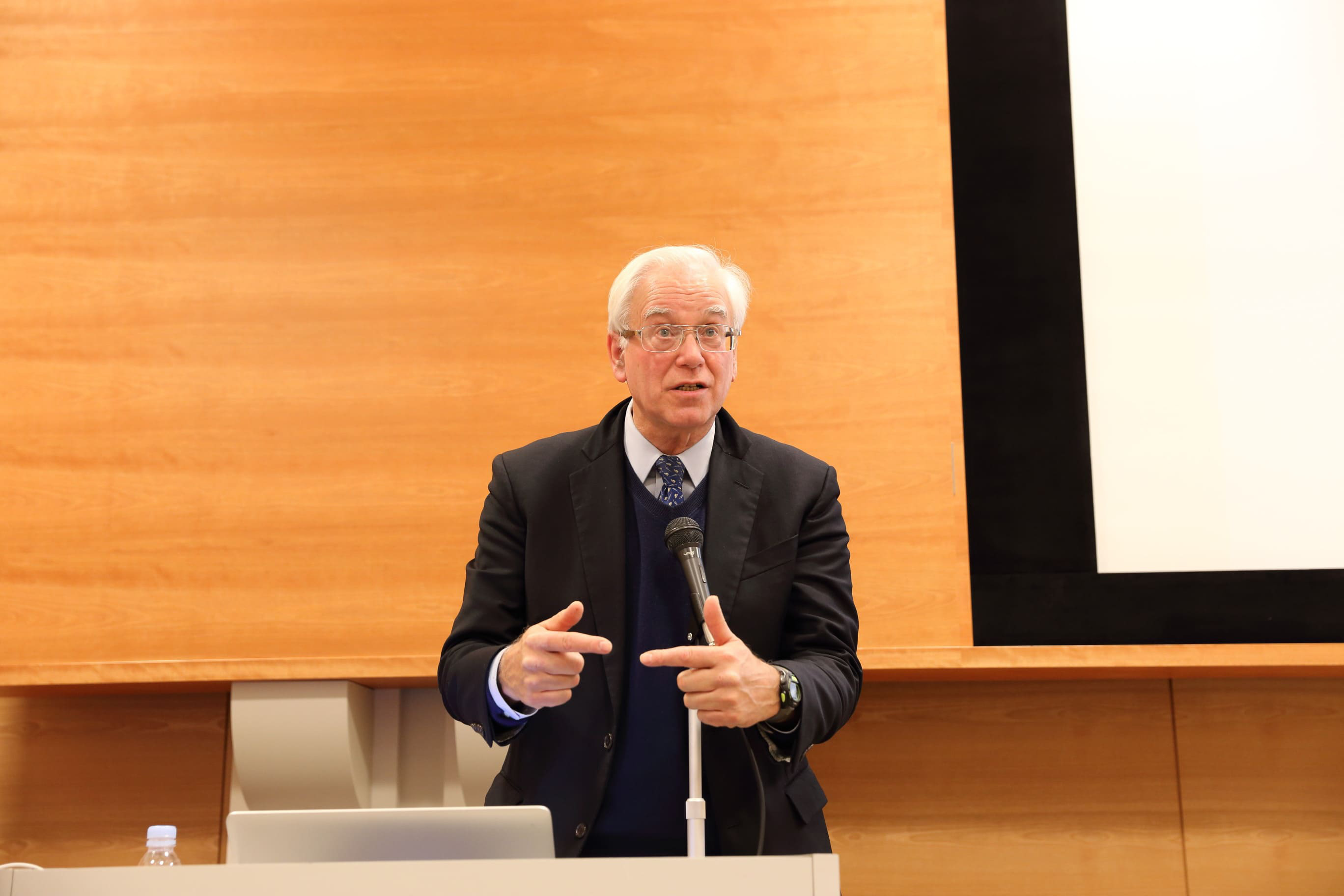
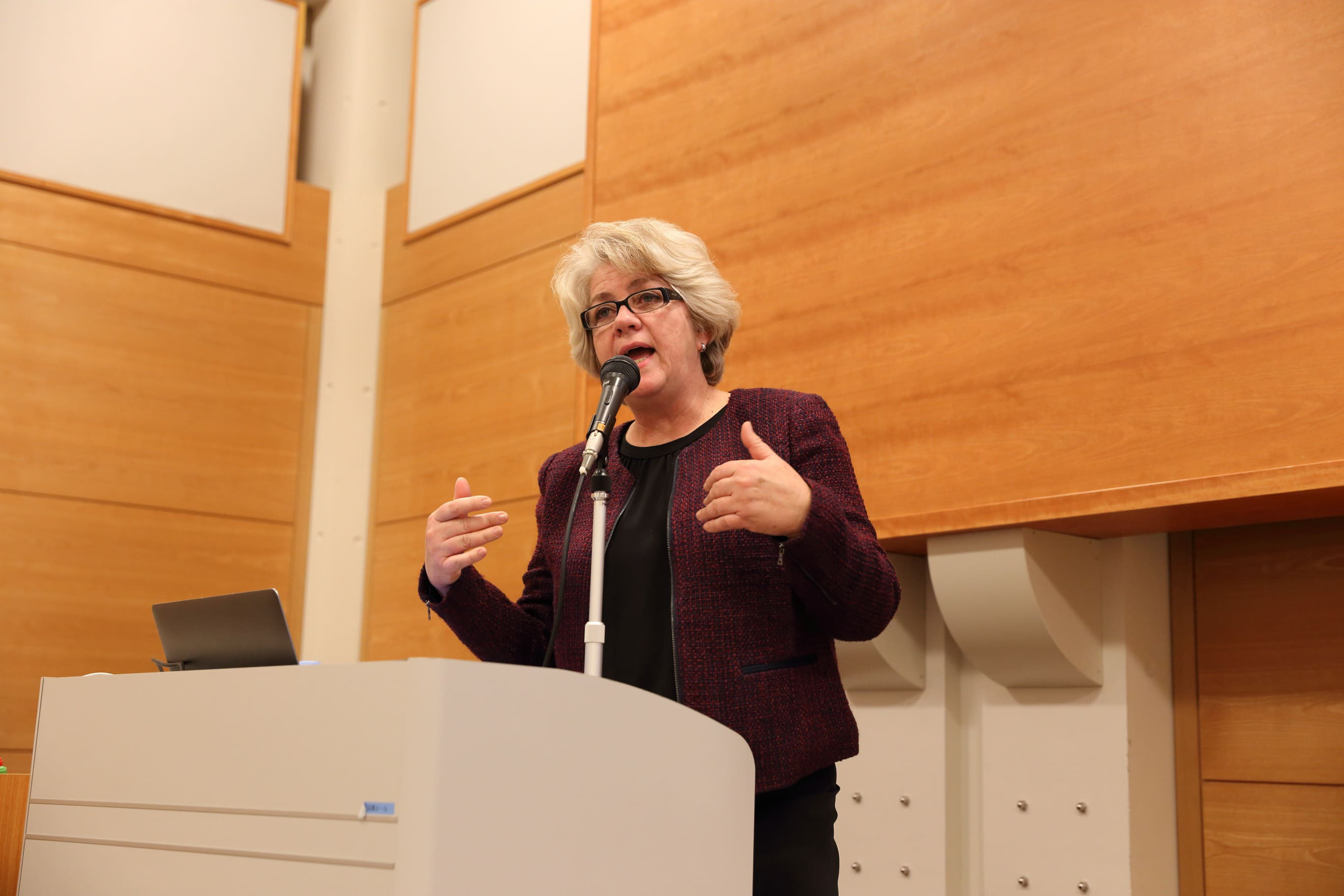
iSYM Seminar @RIKEN Yokohama
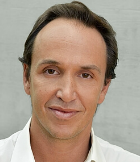
Time: 14:00-15:00
Venue: E717/719, East Research Building, RIKEN Yokohama Campus
Language: English
Speaker: Dr. Youssef Belkhadir, Gregor Mendel Institute of Molecular Plant Biology
Title: Molecular logic in large-scale ligand-receptor interaction networks
Abstract:
In plants genomes, an expanded family of cell-surface receptor kinases (RKs) transduce either ‘self’ or ‘non‐self’ signals into changes in nuclear gene expression. Plant RKs are typically characterized by an extracellular domain, and in most cases, a functional intracellular kinase domain. Extracellular domains (ECDs) can modulate the activity of signaling competent RKs complexes by controlling ligand specificity and by recruiting appropriate signaling partners. There is very limited knowledge on the global interaction network ECDs can establish in their resting or ligand-activated functioning modes. I will present collaborative efforts aimed at discovering novel ligands ad ECD interactions in the RKs repertoire of Arabidopsis.
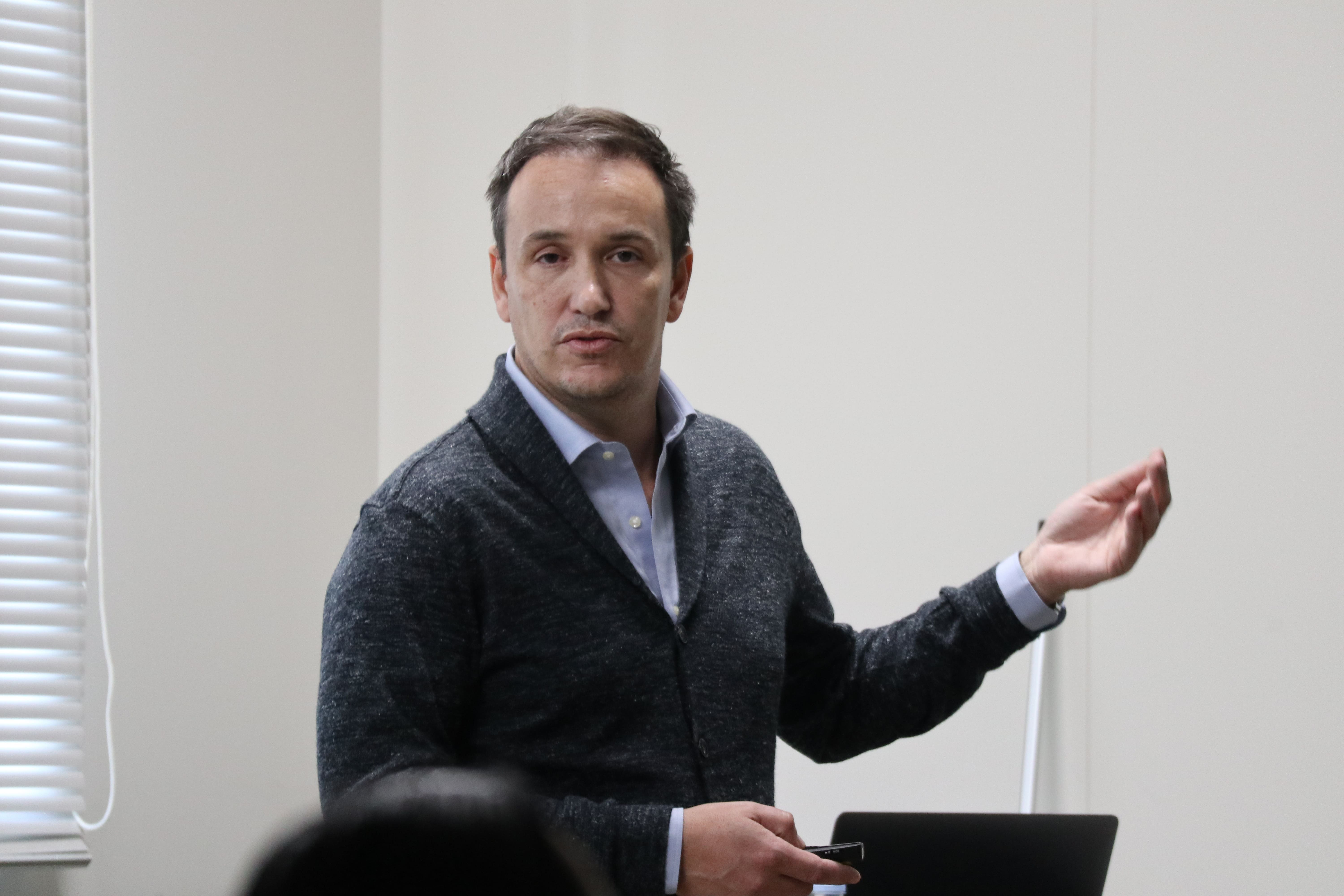
"FRONTIERS in Rhizosphere Research"
Date: November 20th, 2018
Time: 10:30-17:00
Venue: Main Lecture Hall, RIKEN Yokohama Campus
Language: English
Report:
Thank you very much for your attendance for “FRONTIERS in Rhizosphere Research”! Nine young researchers were invited from inside and outside of Japan to present their research. High-level discussions took place and new ideas and advanced technology were introduced during the event. We hope that this event gave an opportunity to build and deepen connections with others.
Speakers and Titles:
-Stephane Hacquard “Microbial Interkingdom Interactions in Roots Promote
-Yasunori Ichihashi “Soil solarization-induced organic nitrogen increase agricultural crop yield"
-Arno Germond “Toward predicting gene expression and metabolism from label free spectral imaging”
-Hirokazu Toju "Core microbiomes for designing sustainable ecosystems”
-Ruben Garrido-Oter “Association studies of plant-associated microbial genomes"
-Shuta Asai “Field-Patho-Genomics−for establishment of soil diagnostics−”
-Ryohei Thomas Nakano “Ternaryinteraction assays revealed modular traits of root microbiota that dictate host growth and immune status”
-Masahito Hosokawa “Obtaining high-quality draft genomes from uncultured microbesby single-cell genome sequencing with droplet microfluidics”
-Yuji Ishigaki “Rhizosphere interactions regulate secondary metabolite production of root-associated microbes"
Program(PDF File)
IMS Seminar @RIKEN Yokohama
Date: June 11th, 2018
Time: 15:00-16:00
Venue: C214/220, 2nd floor, Central Research Building, RIKEN Yokohama Campus
Language: English
Speaker: Dr. Mahesh S. Desai, Group Leader, Department of Infection and Immunity, Luxembourg Institute of Health
Title: Diet-driven interactions of the gut microbiome with the intestinal mucus barrier
Abstract:
The functional interactions of the human gut microbiome with its host are largely driven by diet, yet the underlying mechanisms have remained poorly understood. By employing a gnotobiotic mouse model containing a synthetic human gut microbiota composed of 14 commensal bacteria—we recently showed that a dietary fiber-deprived microbiota degrades the colonic mucus layer, which is the first line of defense against invading microorganisms. Furthermore, a fiber-deprived, mucus-eroding microbiota enhances
susceptibility to the enteric pathogen Citrobacter rodentium (Desai et al.Cell (2016), 167, 1339–1353). Our follow-up experiments indicate that such deterioration of the colonic mucus barrier is associated with the immunological changes observed in inflammatory bowel disease. In the face of changing Western diets, our results suggest that dietary therapeutics, including nextgeneration prebiotics, could be utilized to modulate the the gut barrier alterations and to reduce the incidence of colitis.
RIKEN International Symposium"Frontiers in Integrated Symbiology"
Date: June 4th, 2018
Time: 10:00-17:00
Venue: Small Hall, Tower Hall Funabori, Tokyo
Language: English
Report:
On June 4th 2018, or first symposium was held at Tower Hall Funabori. This time we invited nine speakers from RIKEN and other institutions. Each speaker gave us an interesting talk related to biology of symbiosis, or symbiology. It was a unique opportunity to hear various symbiological systems at a time. For example, we heard the most recent findings in human-microbe, mouse-microbe, fish-microbe, insect-microbe, and plant-microbe interactions. In addition, we also heard organelle integration originated from symbiological interactions. Question time was lively and 5 min wasn't enough at all! Also, coffee time was a great opportunity to meet new people from different fields of research. Thank you everyone for coming to the symposium. We look forward to the next iSYM event!
Host: iSYM, RIKEN, Japan Symbiosis Society
Program(PDF File)
iSYM Innovation Seminar @RIKEN Yokohama
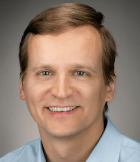
Time: 13:00 - 14:00
Venue: E717/719, East Research Building, RIKEN Yokohama Campus
Language: English
Speaker: Dr. Jonas Korlach, Chief Scientific Officer, PacBio
Title: Latest Capabilities & Future Directions of Long-read PacBio Sequencing
Abstract:
While short-read Next-Generation Sequencing (NGS) has brought about tremendous insights into biology, challenges have remained to characterize many important features of genomes, transcriptomes and epigenomes. Dr. Korlach will describe the latest capabilities and applications of long-read PacBio sequencing on the new Sequel System, including the areas of:
- Efficient and cost-effective de novo assembly of complete bacterial genomes, and simultaneous characterization of their epigenomes
- Full-length bacterial RNA sequencing
- High-resolution 16S and shotgun metagenomics
- Eukaryotic whole-genome sequencing and structural genetic variation detection
- Single-cell transcriptomics
Dr. Korlach will also give an outlook on the roadmap of further throughput increases and resulting applications for the Sequel System.
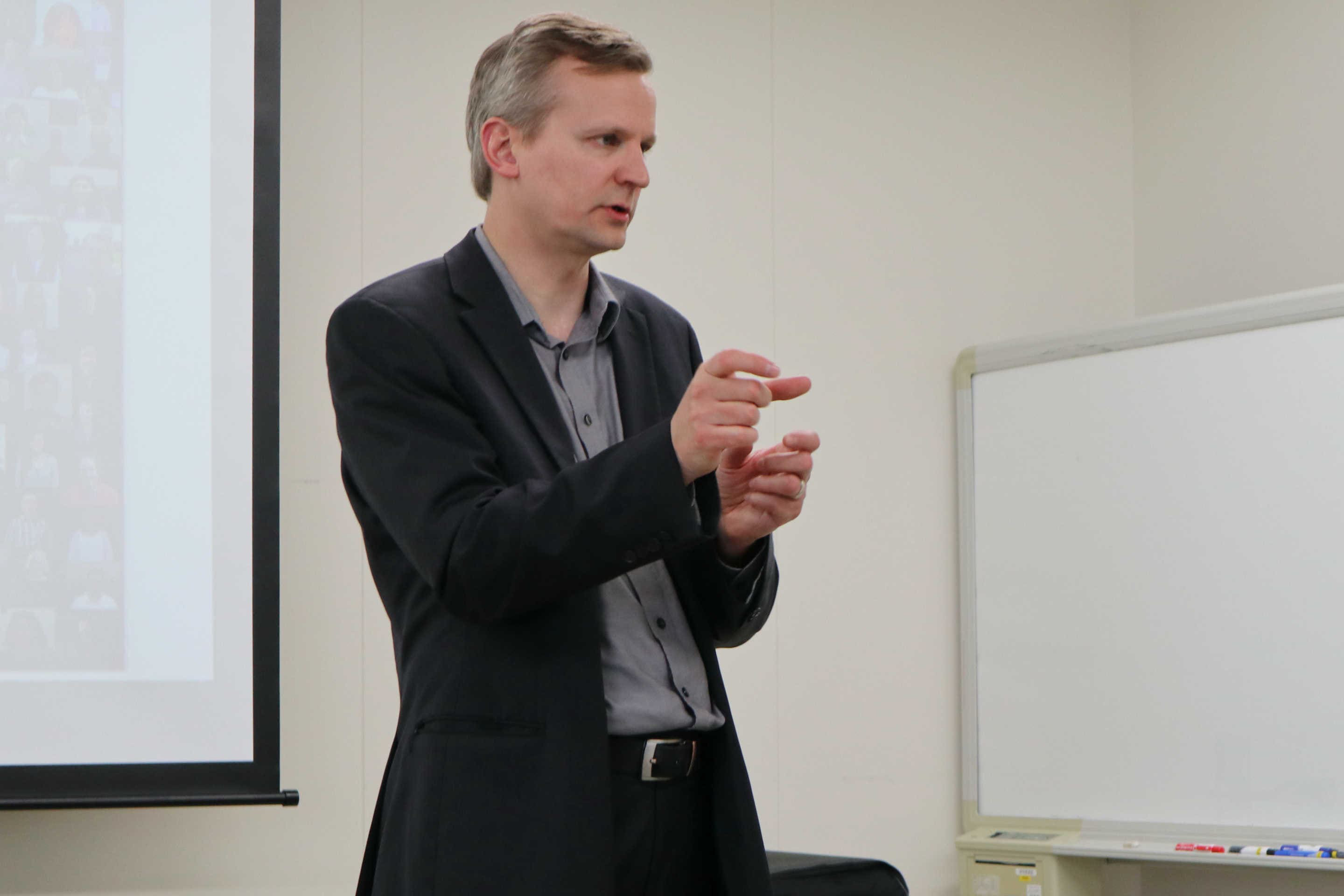
iSYM Internal Seminar Series @RIKEN Yokohama
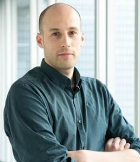
Time: 14:00 - 14:40
Venue: Room C218/220, Central Research Building, RIKEN Yokohama Campus
Language: English
Speaker: Dr. Arno Germond, Laboratory for Comprehensive Bioimaging, RIKEN QBiC
Title: Predicting gene expression from label-free Raman spectroscopy
Abstract:
Raman spectroscopy is a label free microscopy technique that provides a chemical signature of the considered entity. When used on single-cells, spectral images can be reconstructed to visualize the distribution of the molecular compounds present in cells (Lipids, Proteins, Cytochrome, Nucleic Acids.). Spectral information provides a unique phenotype of the measured entity, which have proven useful to classify and discriminate cell type or cell state of single living cells with a high accuracy. In the past 3 years, I have been developing the Raman platform of QBIC, from the measurement methodology to the analysis pipeline, and proved its efficiency and utility to classify and discriminate samples of both chemical liquids and cells, such as E. coli and human iPS cells. Despite the relatively low sensitivity and temporal resolution of Raman spectroscopy, our laboratory demonstrated that Raman spectroscopy is a useful tool to monitor the change in cell-state (such as differentiation or reprogramming) over time.
However, in most cases, spectral data cannot be easily interpreted in a straightforward or biologically-relevant manner. Gene expression, on the other hand, provide a much more informative layer of informative about the biological system. My hypothesis was that these two layers of high-dimensional information are linked through the complex network of the cell. Today I report about my most recent research which aims at linking the Raman spectral information to the transcriptomic data. Using a multivariate statistical model, and a simple biological model (namely, various mutant cell lines of E. coli), I show that the prediction of the transcriptome from Raman spectral data is possible. The model showed excellent performances and some accurate prediction of 2613 genes. Results showed that the worst predicted genes by the model were also the genes that showed mutations in their respective cell lines, which tend to support the proposed hypothesis. Then, by applying a network analysis, we highlighted the “strongest” pairs of Raman wavelengths and gene expression, which are the best pairs explained by the model. These nodes can provide useful information to decipher the unique relation between Raman spectra and gene expression. Now, I would like to apply this method on the microbiota cell lines to see how good we could predict the gene expression of cell lines from label-free fast measurements. I strongly encourage people interested in this technique of classification/discrimination to come forward for a collaboration to answers problematics relating to the study of symbiosis.
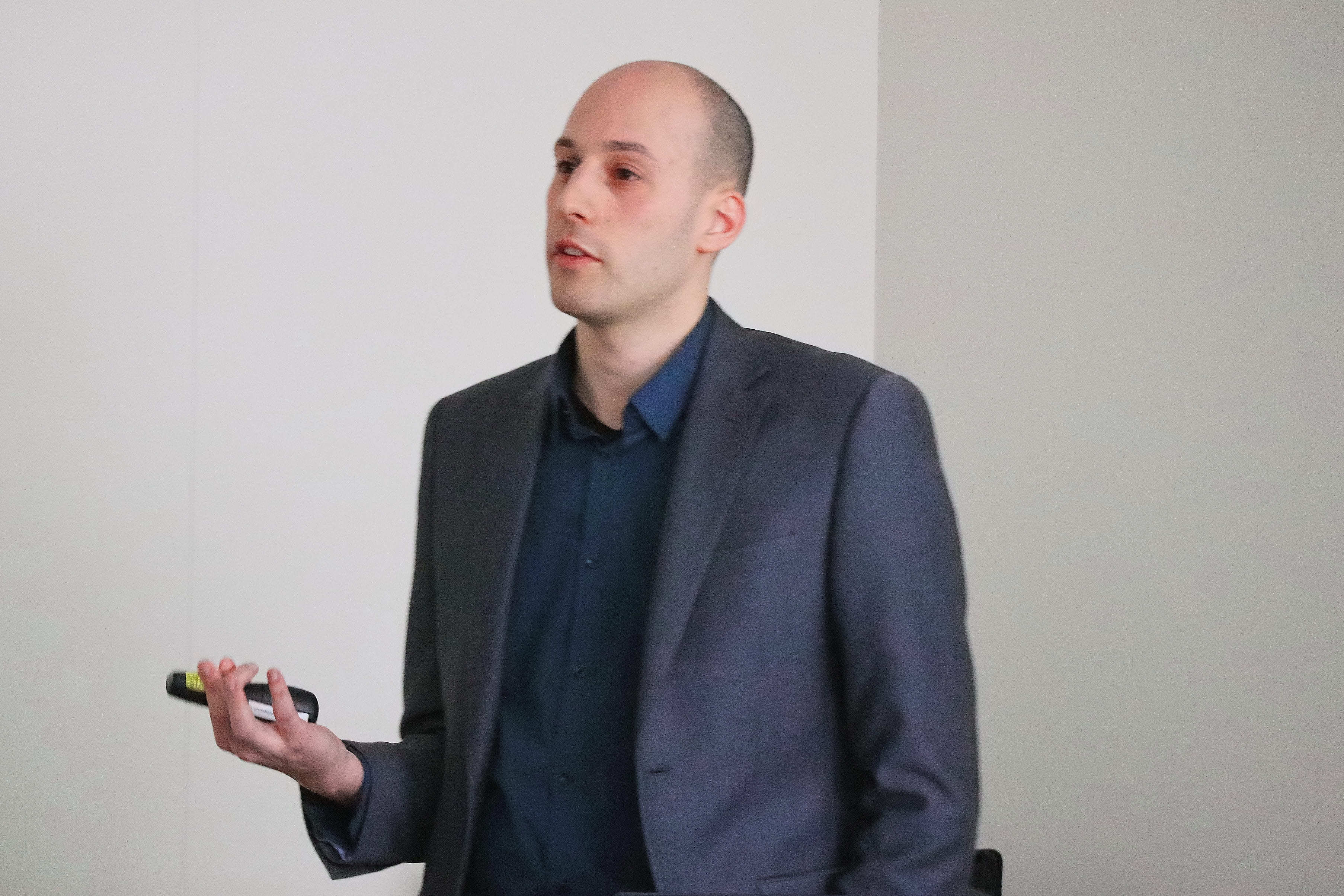
iSYM Seminar @RIKEN Yokohama
Date: December 14th, 2017
Time: 14:00 - 15:00
Venue: Room E717/719, East Research Building, RIKEN Yokohama Campus
Language: English
Speaker: Prof. Scott C. Peck
Biochemistry Department, University of Missouri, USA
Title: New Insights into the Basis of Innate Immunity in Plants
Abstract:
Plants perceive potential pathogens by recognizing pathogen-associated molecular patterns (PAMPs) through plasma membrane (PM) receptors. Recognition of flg22, a 22 amino acid PAMP derived from the bacterial flagellum, by the receptor-like kinase FLS2 induces defense signaling responses and contributes to innate immunity by restricting bacterial invasion. We have developed quantitative phosphoproteomic technology to identify novel Arabidopsis proteins that are rapidly phosphorylated following PAMP treatments, and using reverse genetics, we have defined functions for a number of these candidates in innate immune responses.
Plant recognition of potential bacterial pathogens initiates the rapid deployment of defenses, thereby preventing colonization. Much of what is known about plant resistance against bacteria involves production of and response(s) to salicylic acid (SA). However, SA-independent mechanisms of resistance are known to exist but have been poorly defined. We found that the enhanced resistance of the MAP kinase phosphatase 1 (mkp1) mutant in Arabidopsis is genetically independent of SA production and signaling, providing possible insights into SA-independent mechanisms. We previously reported that resistance in mkp1involves the restriction of plant chemical signals used by virulent bacteria to induce of their type III secretion system (TTSS), and we also reported that this mechanism appears to be shared with PAMP-triggered immunity (PTI; Anderson et al., 2014). Because PTI, like the resistance in mkp1, previously has been found to be independent of SA, we examined if – and confirmed that – PTI restriction of effector delivery was also independent of SA. These results provide a simple explanation of a mode of SA-independent resistance that can be rapidly activated before SA production is initiated. Anderson et al (2014) Decreased abundance of type III secretion system-inducing signals in Arabidopsis mkp1 enhances resistance against Pseudomonas syringae. PNAS 111:6846-6851.
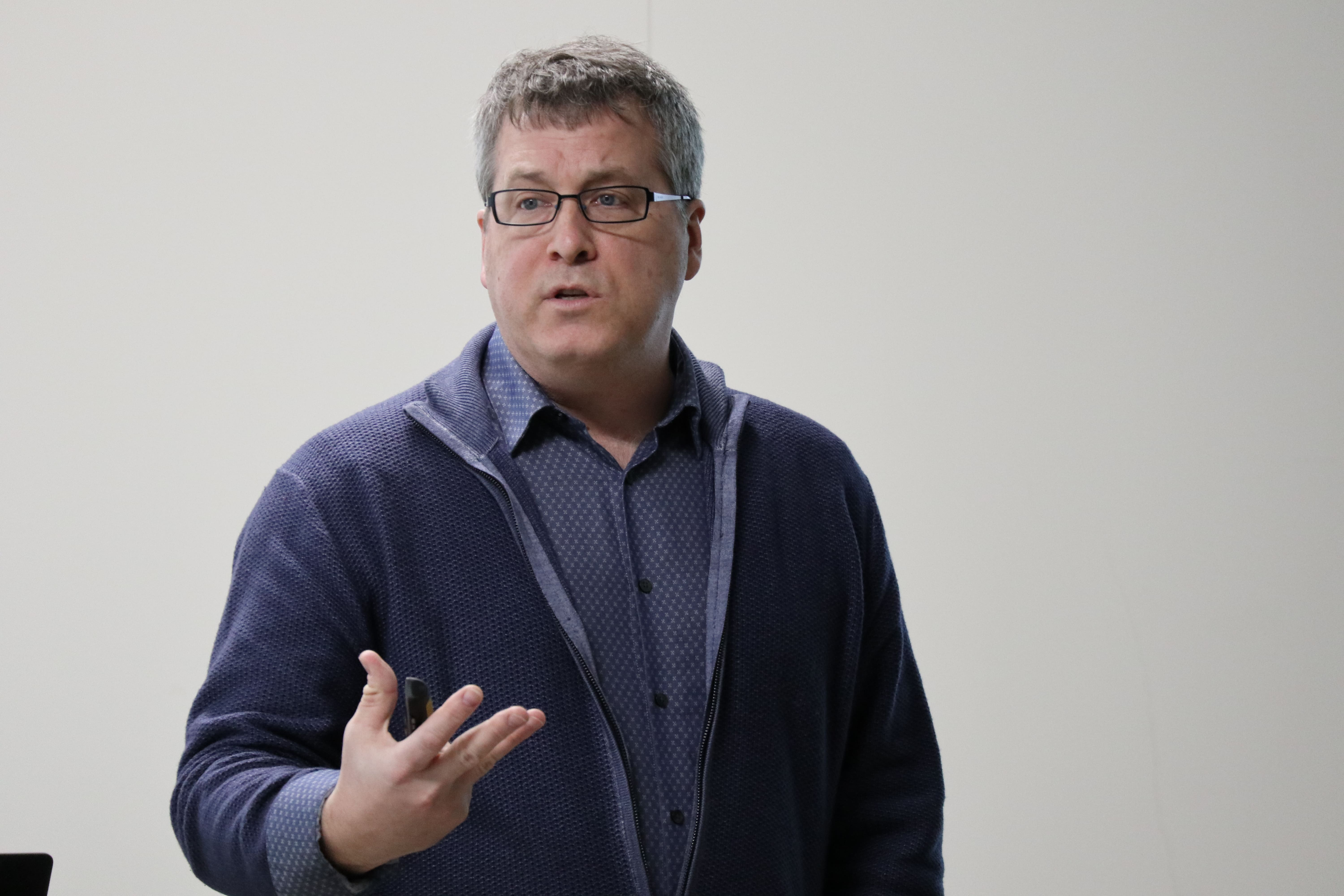
iSYM Seminar @RIKEN Yokohama
Date: November 10th, 2017
Time: 11:00 - 12:00
Venue: Conference Room, 6F North Research Building, RIKEN Yokohama Campus
Language: English
Speaker: Heidi H. Kong, M.D., M.H.Sc,
Head, Cutaneous Microbiome and Inflammation Section, Adjunct Investigator, National Cancer Institute (NCI), Dermatology Branch
Title: The microbiome in healthy skin and atopic dermatitis
Abstract:
The varied topography of human skin offers a unique opportunity to study the body’s microenvironments and the functional and taxonomic composition of microbial communities. The general accessibility of skin also enables longitudinal clinical studies throughout the course of disease. Metagenomic analyses of diverse body sites in healthy humans have defined the skin microbiome as shaped by the local biogeography, yet marked by strong individuality. Additionally, strain-level variation of dominant species was heterogeneous and multiphyletic in healthy adults. Re-sampling months and years later revealed that despite the skin’s exposure to the external environment, the bacterial, fungal, and viral communities were largely stable over time. Strain and single nucleotide variant level analysis showed that individuals maintain, rather than reacquire prevalent microbes from the environment. Longitudinal stability of skin microbial communities informs clinical studies exploring alterations observed in disease states, such as the inflammatory skin disorder atopic dermatitis (commonly known as eczema). We are integrating shotgun metagenomic sequencing, culturing, and animal models to improve our understanding of atopic dermatitis.
iSYM Seminar @RIKEN Yokohama
Date: October 24th, 2017
Time: 15:00 - 16:00
Venue: Room E717/719, East Research Building, RIKEN Yokohama Campus
Language: English
Speaker: Dr. Henrik Stotz
School of Life and Medical Sciences, University of Hertfordshire, UK
Title:
Effector-triggered defence against apoplastic fungal pathogens of oilseed rape
Abstract:
Apoplastic fungal pathogens cause annual crop losses in the order of tens of billions of dollars each year. At the University of Hertfordshire, we work on the two most important oilseed rape diseases in the UK, phoma stem canker and light leaf spot caused by Leptosphaeria spp. and Pyrenopeziza brassicae, respectively. We hypothesise that receptors with extracellular leucine-rich repeat (eLRR) domains are responsible for R gene-mediated resistance against these apoplastic fungal pathogens. We introduced the term effector-triggered defence to better describe resistance against pathogens that colonise the extracellular space of plant tissues.
Sequenced oilseed rape (Brassica napus) genomes were used to identify eLRR genes and to determine their contribution to resistance against different classes of oilseed rape pathogens. Efforts are underway to better understand temperature sensitivity of phoma stem canker resistance. Evidence has been obtained that specific effectors of L. maculans suppress host defence responses. Analysis of RNAseq data suggests cellular processes that are involved in host susceptibility to or resistance against L. maculans. A better molecular understanding of effector-triggered defence will help plant breeders in more effectively managing disease losses caused by these fungal pathogens.
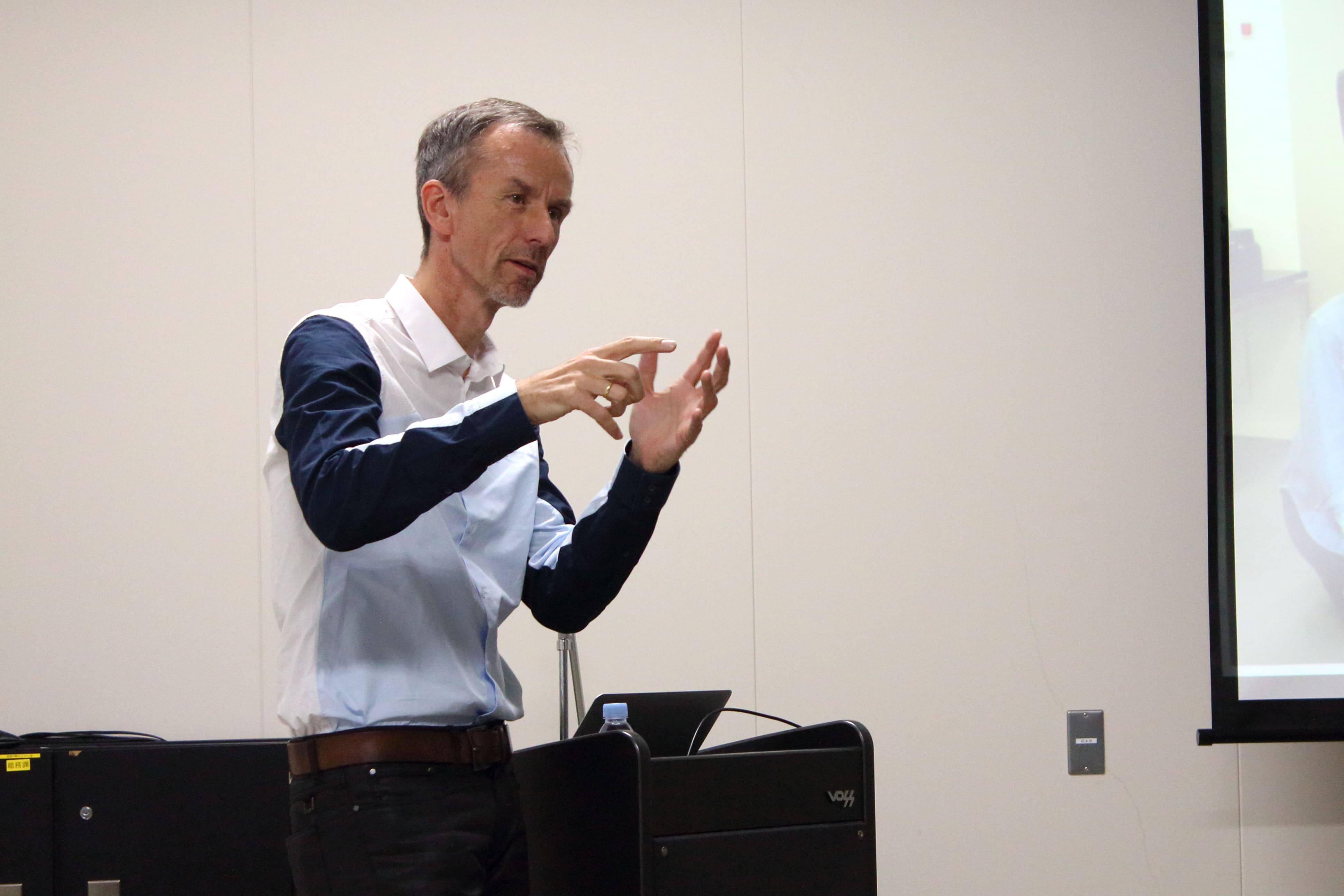
iSYM Innovation Seminar @RIKEN Yokohama
Date: October 5th, 2017
Time: 10:30 - 11:30
Venue: Room 214/216, Central Research Building, RIKEN Yokohama Campus
Language: English
Speaker: Dr. Derek Bartlem
Head of Research USA, KWS Gateway Research Center, USA
Title:
KWS – a different kind of plant breeding company with research institutes in US and Europe.
Abstract:
This seminar will provide an introduction to an international plant breeding company that was first established over 160 years ago. KWS is based in Germany and present in over 70 countries. In addition to strong biotech research activities in Germany, the KWS Gateway Research Center was recently established as KWS’ North America plant biotech research facility in St. Louis, USA. There is a strong focus on innovative research and new product development in KWS, and a very unique culture that provides a positive environment for scientists coming from both industry and academic backgrounds. This seminar is focused towards academic researchers to explain the history and focus of KWS, and to encourage dialogue with you on potential opportunities for collaborating together.

iSYM Seminar @RIKEN Yokohama
Date: September 29th, 2017
Time: 10:00 - 15:00
Venue: Room 214/216, Central Research Building, RIKEN Yokohama Campus
Language: English
Speakers:
10:00 - 10:45
Brad Day, Professor & Associate Chair for Research
Department of Plant, Soil and Microbial Sciences, Michigan State University, USA
http://msudaylab.org
"The plant guard cell as a paradigm for the analysis of immunity and pathogen virulence"
Abstract
10:45 - 11:30
Gregg A. Howe, MSU Foundation Professor,
Department of Energy-Plant Research Laboratory; Department of Biochemistry and Molecular Biology; Plant Resilience Institute, Michigan State University, USA
https://prl.natsci.msu.edu/people/faculty/gregg-howe/
"Modularity in Jasmonate Signaling for Multi-stress Tolerance”
Abstract
(Lunch Break)
13:30 - 14:15
Michael Thomashow, MSU Foundation Professor,
Department of Energy-Plant Research Laboratory; Department of Plant, Soil and Microbial Sciences; Plant Resilience Institute, Michigan State University, USA
https://prl.natsci.msu.edu/people/faculty/michael-thomashow/
"Regulation of Freezing Tolerance and Salicylic Acid-Mediated Immunity by Arabidopsis CAMTA Transcription Factors”
Abstract
14:15 - 15:00
David B. Lowry, Assistant Professor,
Department of Plant Biology, Michigan State University, USA
https://davidbryantlowry.wordpress.com/
"The Genetic and Physiological Basis of Adaptation to Divergent Habitats"
Abstract
Host: Dr. Ken Shirasu, Plant Immunity Research Group, CSRS
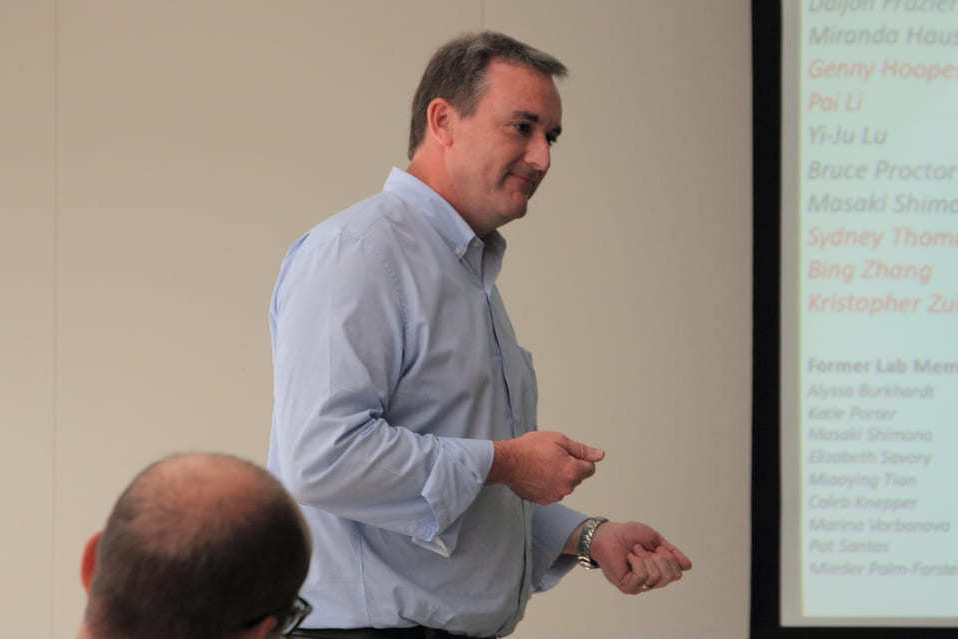
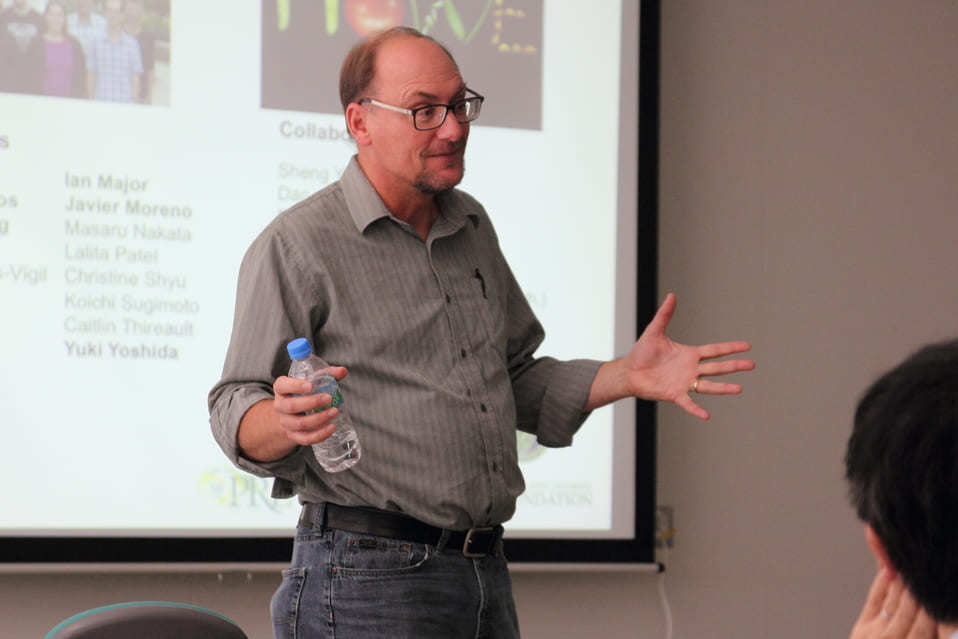
iSYM Seminar @RIKEN Yokohama
Date: August 30th, 2017
Time: 15:00 - 16:00
Venue: Room 717/719, East Research Building, RIKEN Yokohama Campus
Language: English
Speaker:
Dr. Ryoji Shinya
Senior Assistant with tenure (Principal Investigator)
Department of Agriculture, Meiji University
Title:
Bursaphelenchus okinawaensis: an emerging genetic model for plant-parasitic nematodes
Abstract:
Nematodes have successfully adapted to nearly every ecological niche and developed various unique morphological and ecological traits. In particular, the economically relevant plant-parasitic nematodes are diverged from free-living nematodes including the model organism Caenorhabditis elegans, and have highly specialized characteristics such as parasitism, morphology, and sexual traits. Unfortunately, most of the genetic techniques and tools developed in C. elegans research are not directly applicable to the plant-parasitic nematodes due to these differences. Therefore, little is known about the genes controlling such plant-parasitic nematode-specific functions. Recently, a genetically tractable system with the hermaphroditic nematode Bursaphelenchus okinawaensis is being developed to solve this problem. This seminar will introduce this emerging genetically tractable system for the study of plant-parasitic nematodes and explain how it works using the study of sex determination mechanisms as an example.
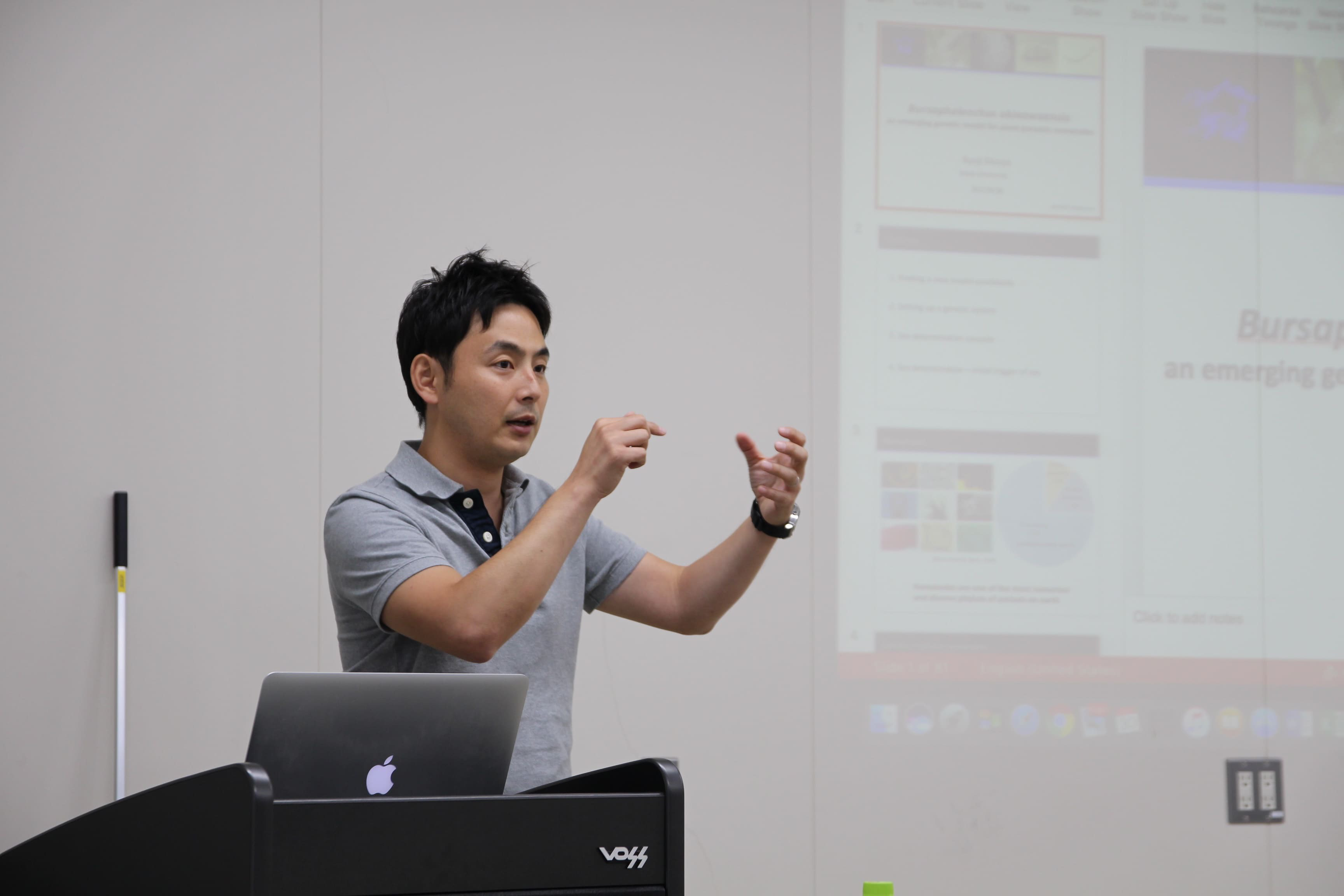
iSYM "Biology of Symbiosis" Workshop
Dates: August 21st - 22nd, 2017
Place: RIKEN Yokohama Campus, Main Office Building, Lecture Hall (Koryuto Hall)
Language: English
The program of "Biology of Symbiosis" Workshop
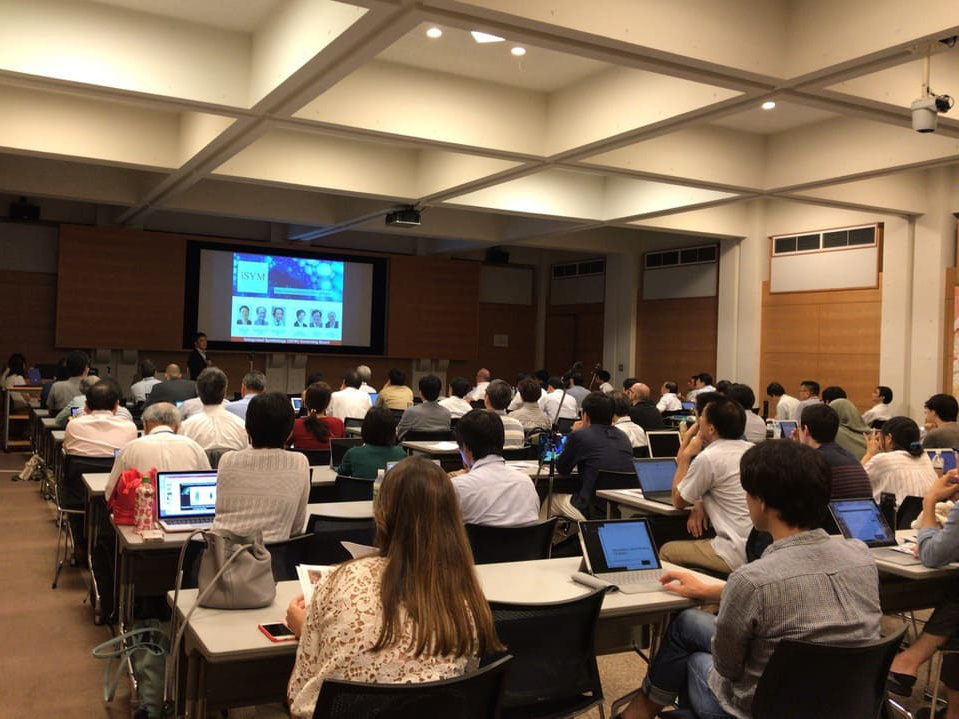
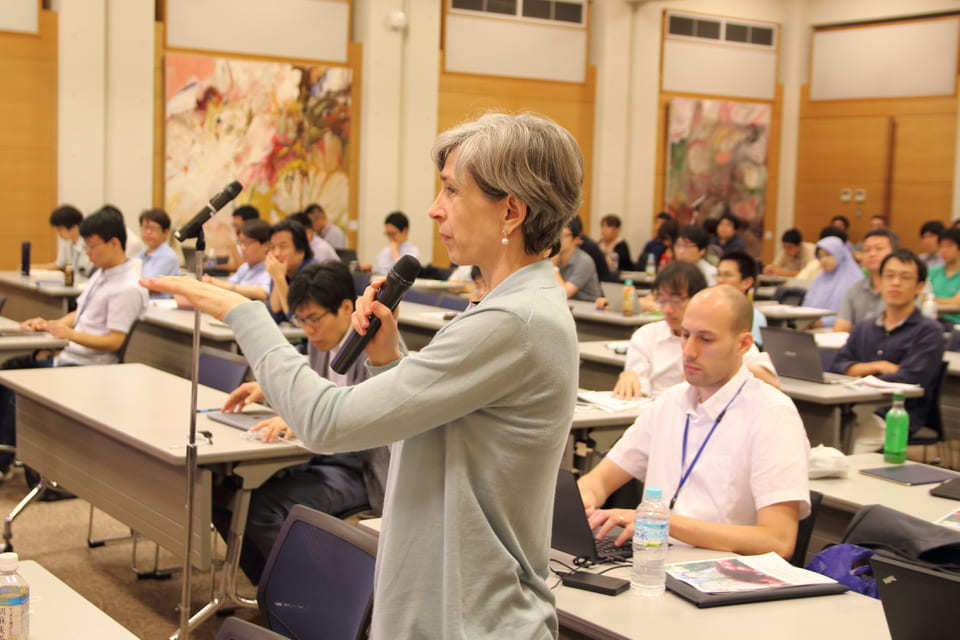
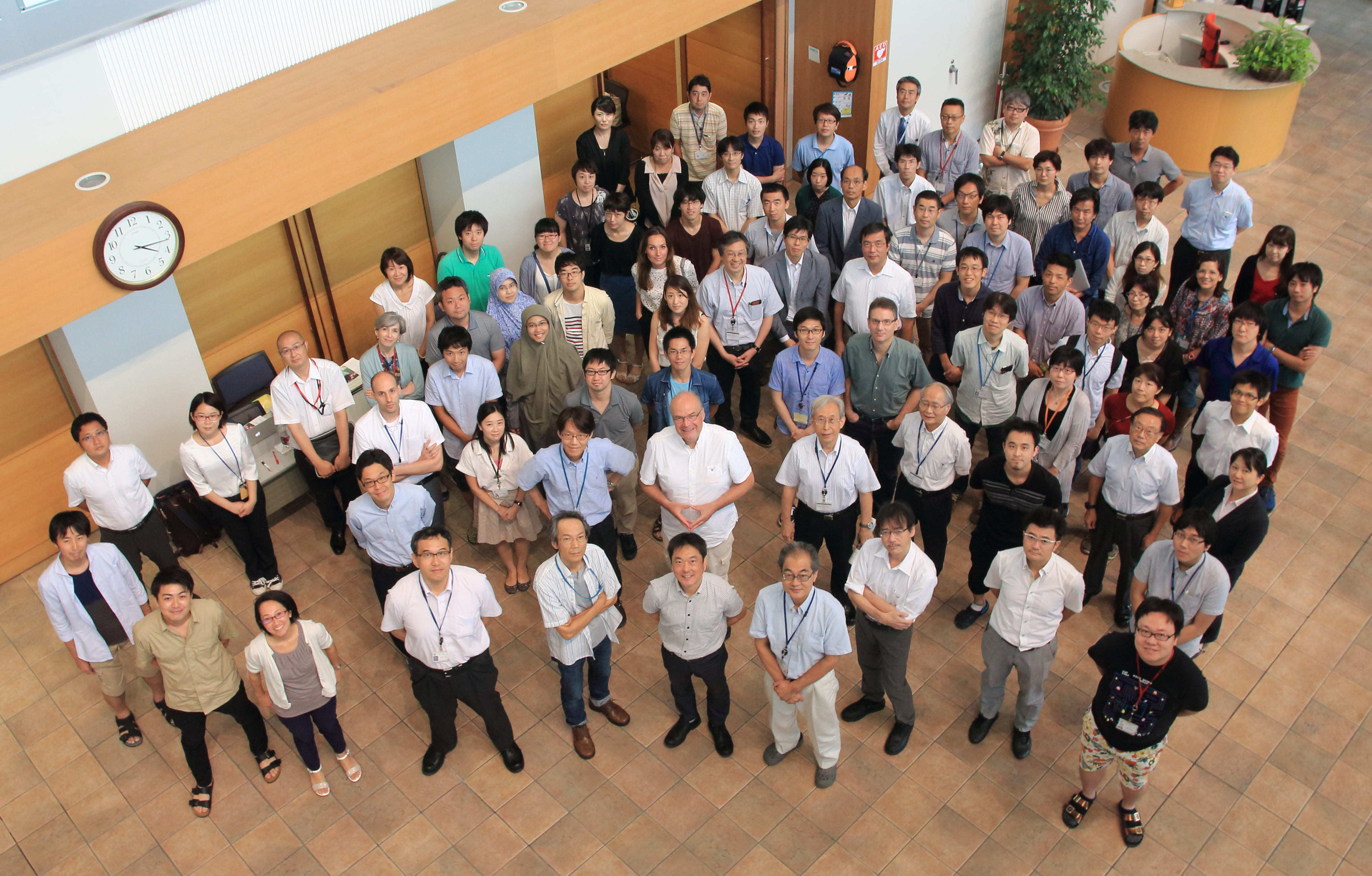
RIKEN Seminar
Title:
Microbial fermentation products shape host immune system through epigenetic modifications
Speaker:
Prof. Koji Hase(Division of Biochemistry, Faculty of Pharmaceutical Science, Keio University)
Date: Tuesday, June 27, 2017 17:00-18:00
Language: English
Venue: Main Office Bldg. (Koryu-to)Hall, Yokohama Campus
※Live telecast from Wako
<Wako: 408 Seminar Room, Chemical Biology Bldg.>
<Kobe: N701-703 Seminar Room, Building A>
<Tsukuba: Moriwaki Hall>
Seminar Poster

